A few weeks back I got to visit Rameswaram town after a decade or so. The main reason for the trip was to visit the recently opened memorial for Dr Kalam at Peikarumbu, Rameswaram.
Faizabad Express Train
We travelled from Chennai by train – the newly introduced “Faizabad Express” (16794) that runs from Ayodhya to Rameswaram. The train leaves Chennai Egmore at 18:50 to reach Rameswaram next day morning 07:10. It was a new route, the coaches were brand new and comfortable, with bio-toilets that don’t dirty the tracks with its waste.
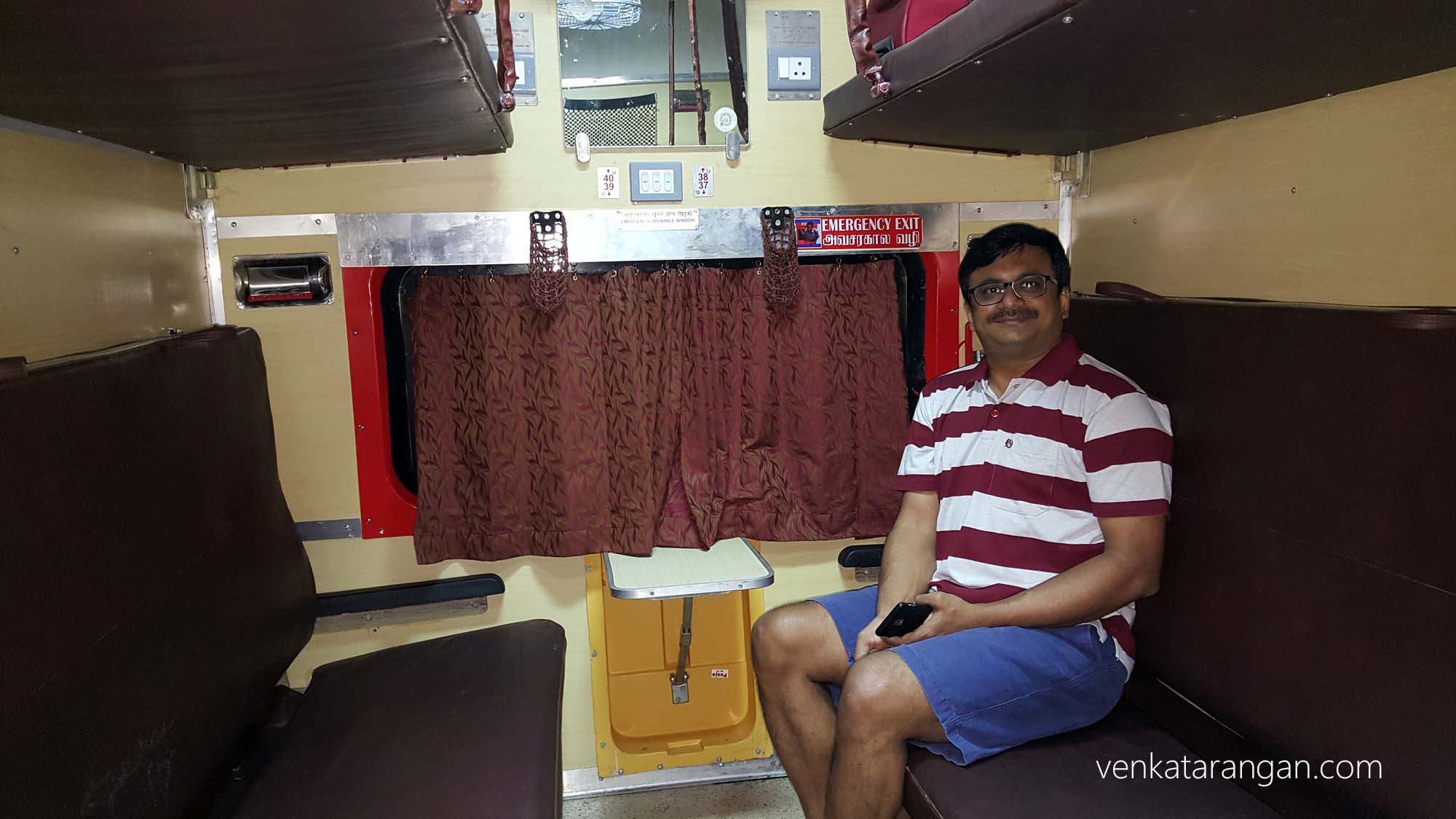
Second AC coaches – Faizabad Express
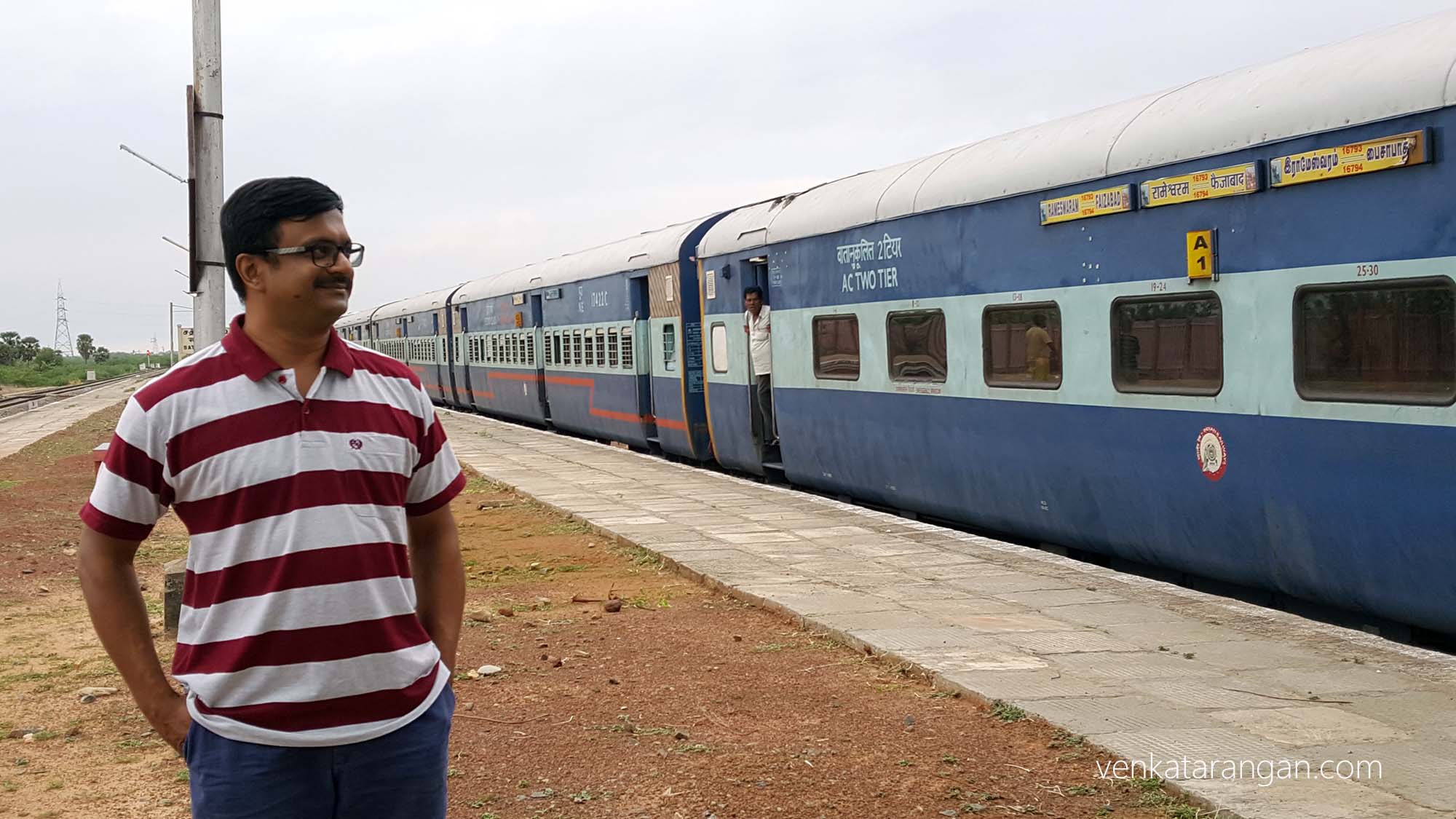
“Faizabad Express” (16794) that runs from Ayodhya to Rameswaram
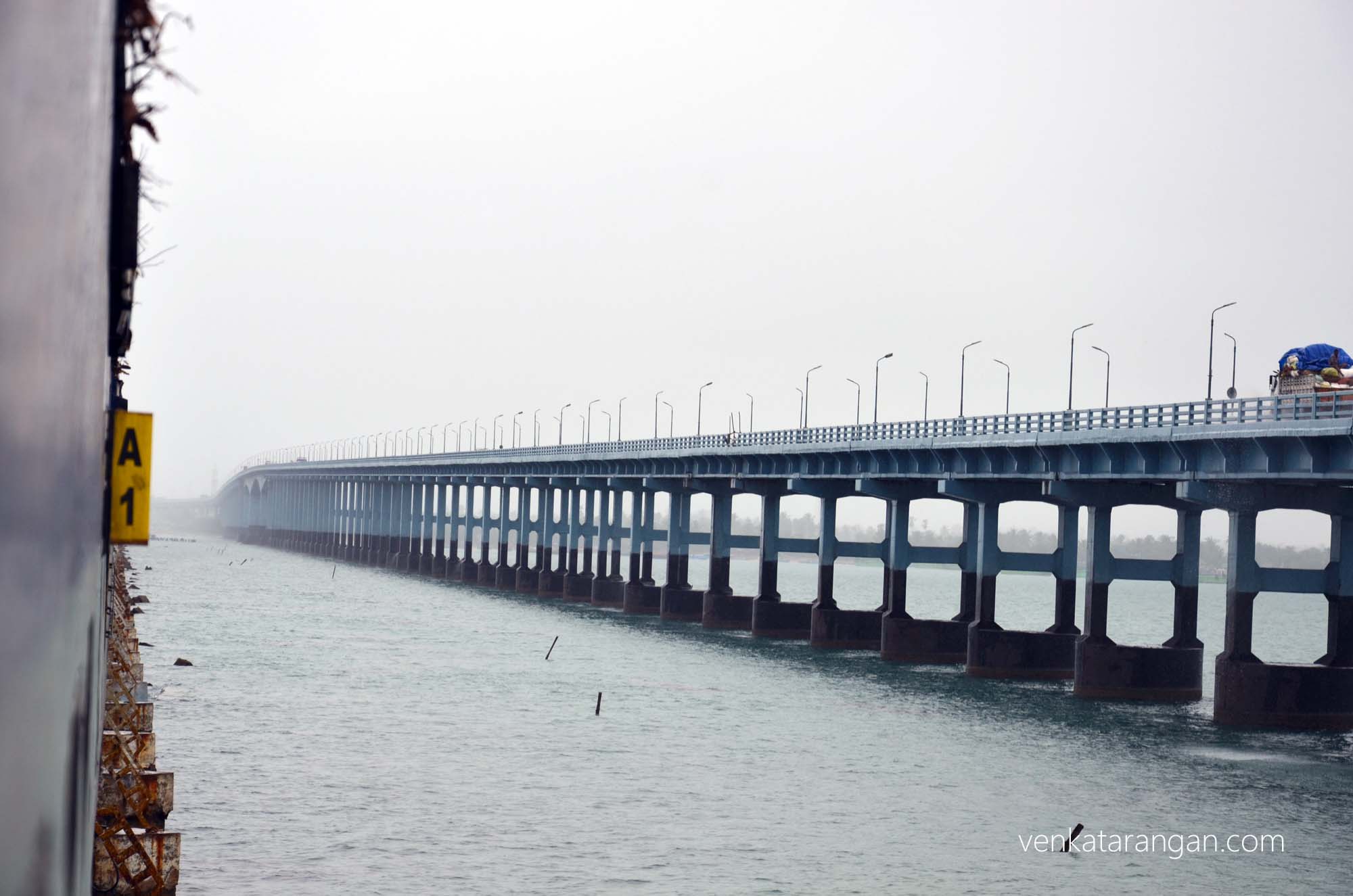
Train as it goes over the historic Pamban Bridge
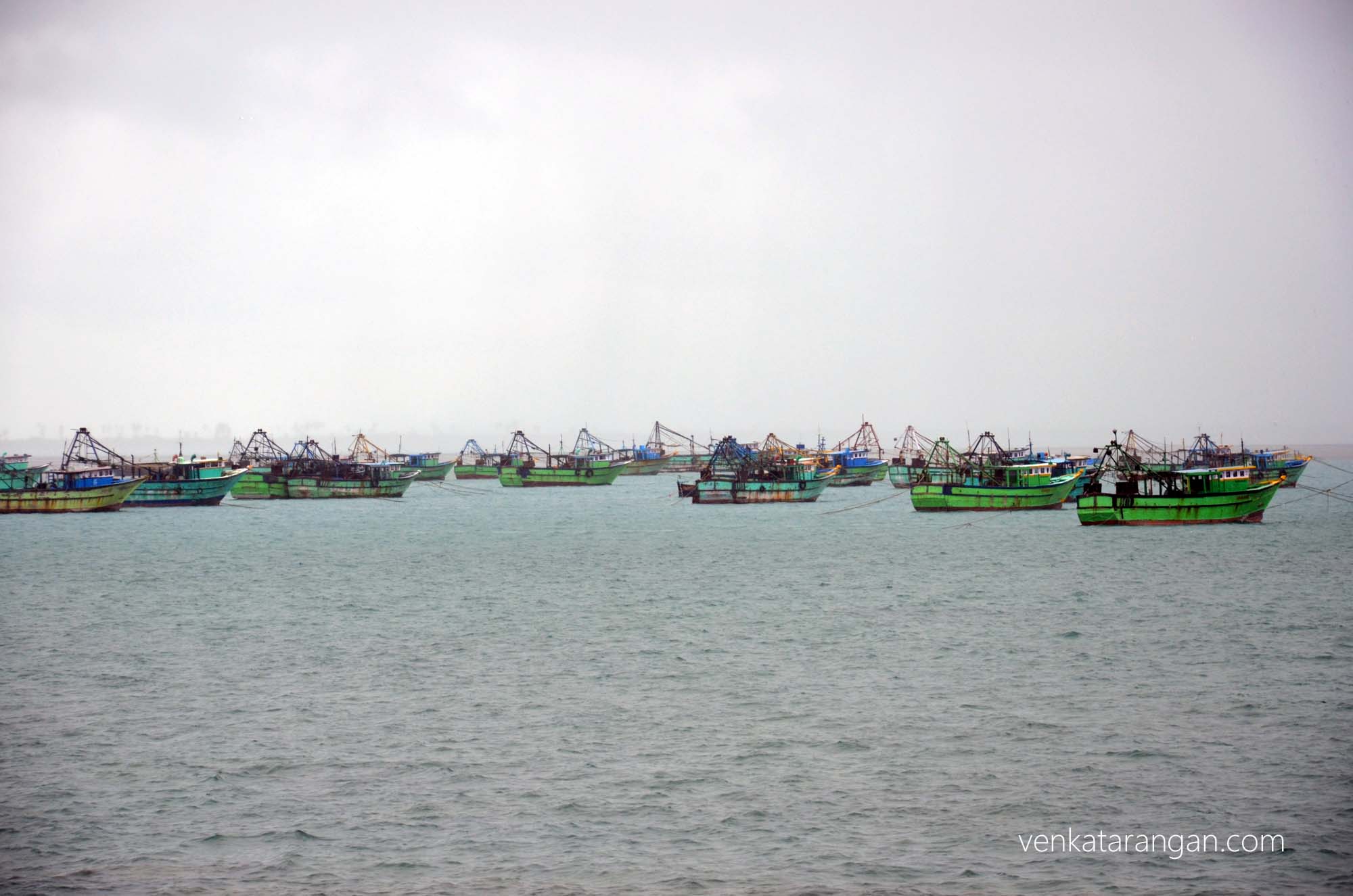
Fishing boats as seen from Pamban Bridge
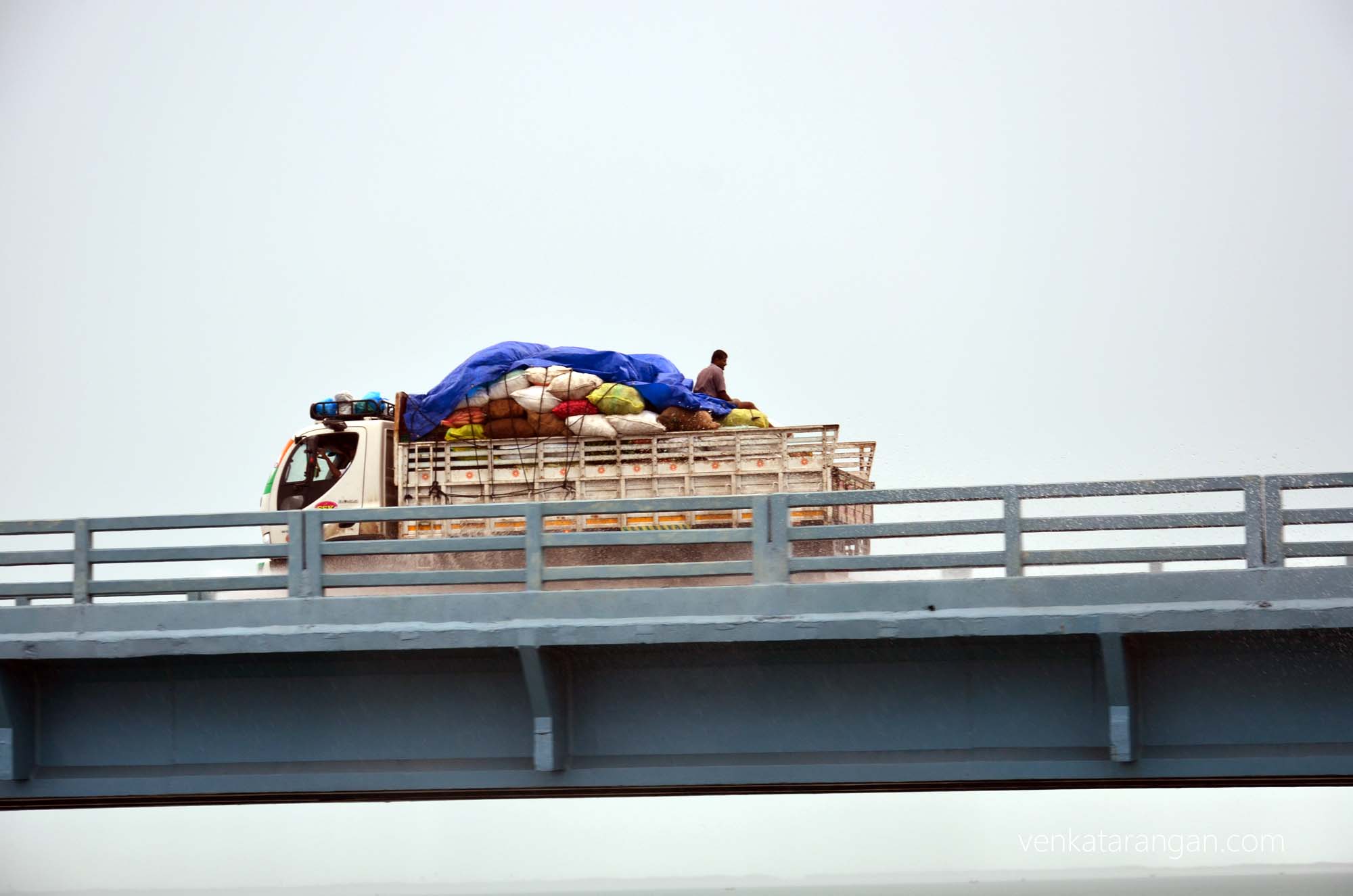
Mini truck going over the new road bridge to Pamban village
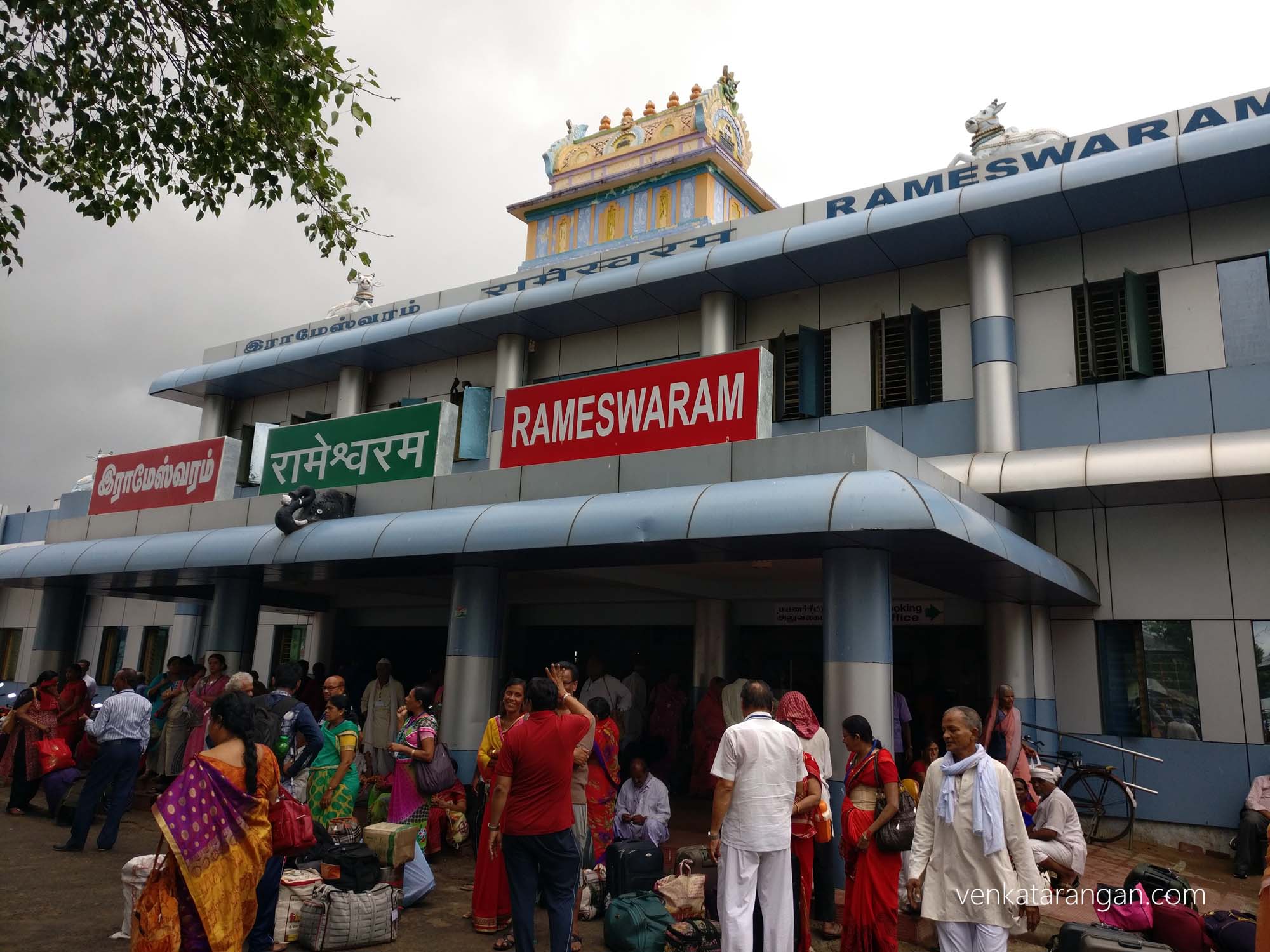
Rameswaram Station
We stayed at Daiwik Hotels Rameswaram, which was one of the best hotels in town.
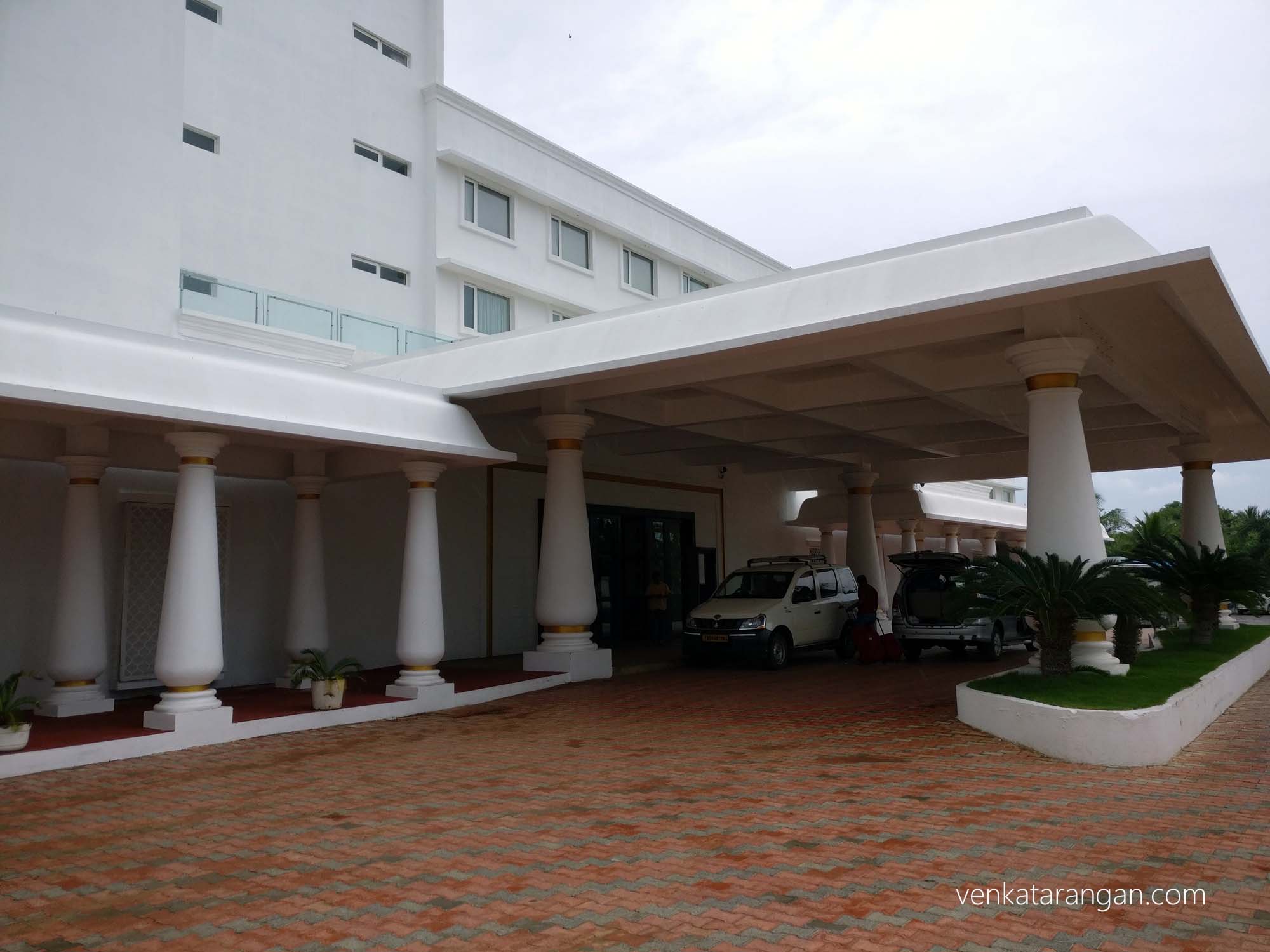
Daiwik Hotels Rameswaram
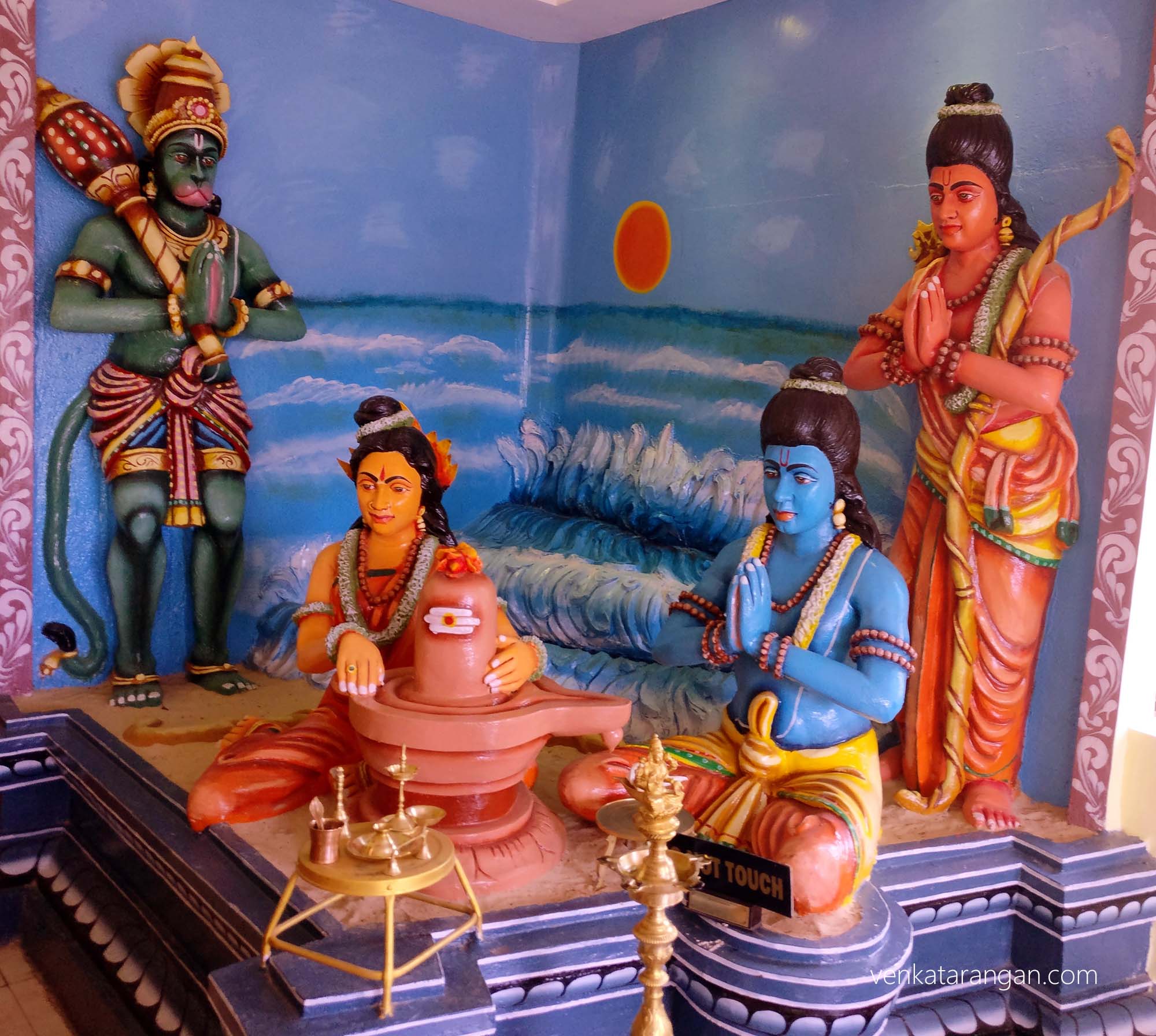
Model depicting the story behind Rameswaram – Rama & Sita praying to Lord Siva – Seen at Hotel Royal Park, Rameswaram
Ramanathaswamy Temple on Rameswaram Island
After settling down in the hotel and a bath, we went for a darshan at the famous Ramanathaswamy Temple on Rameswaram Island dedicated to the God Shiva. It is one of the 274 Paadal Petra Sthalams, where the three of the most revered Nayanars (Saivite saints) have glorified the temple with their songs. The temple was expanded during the 12th century by Pandya Dynasty. The presiding deity, the Lingam of Ramanathaswamy (Shiva), is believed to have been established and worshipped by Rama, an avatar of the God Vishnu, to absolve the sins created during the Ramayana war at Sri Lanka. According to Skānda Purāṇa, twenty-four Tīrthas (holy water bodies) that are on this island are important. Bathing in these Tīrthas is a major aspect of the pilgrimage to Rameswaram and is considered equivalent to penance. Twenty-two of the Tīrthas are within the Rāmanāthasvāmī Temple, hence you will see on any given day thousands of pilgrims queueing for the holy bath. As pilgrims move around in half-dried clothes, the corridors in the temple can be wet – the elderly have to be careful while walking.
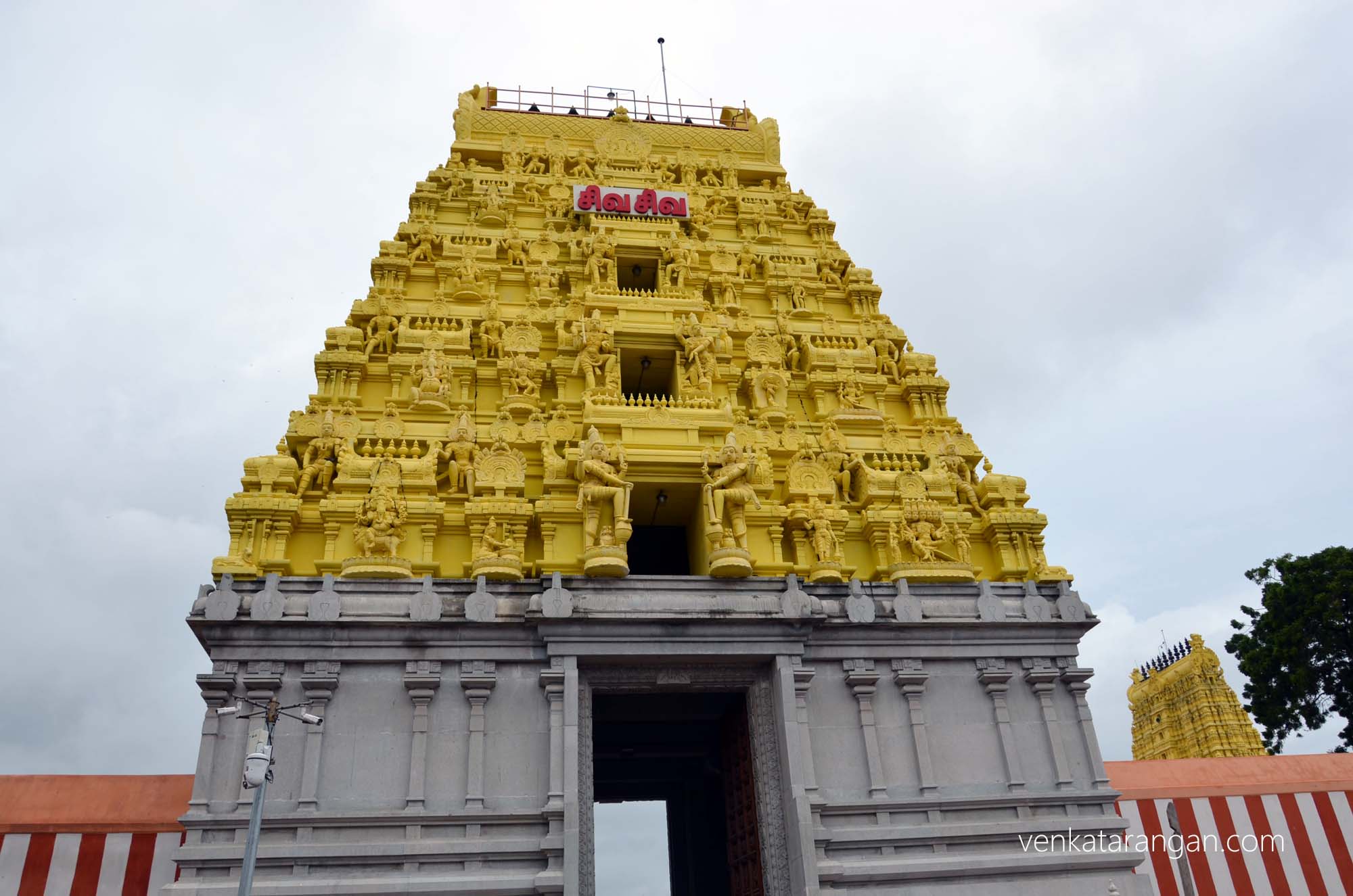
South tower of Ramanathaswamy Temple
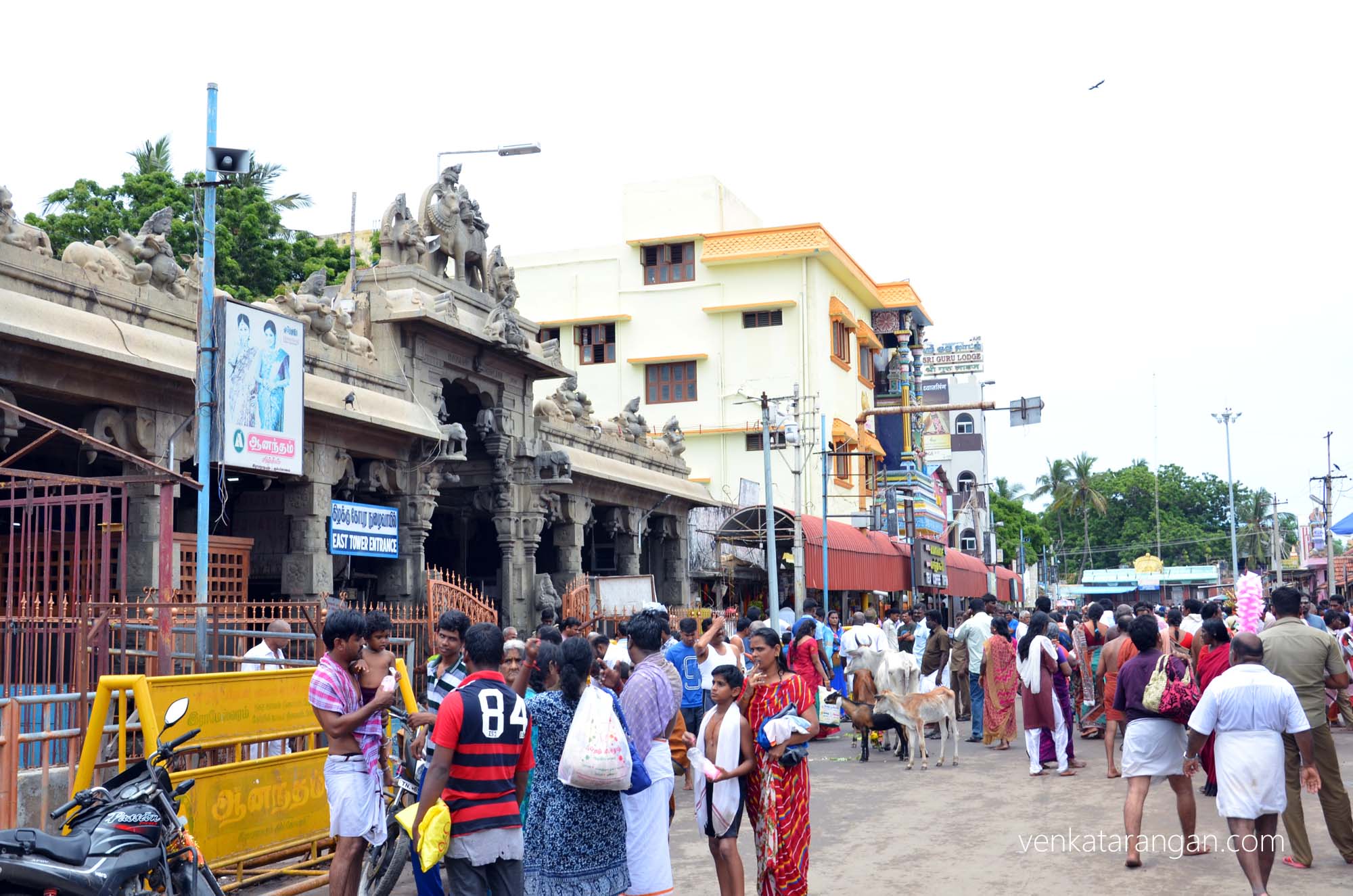
Pilgrims near the east tower entrance
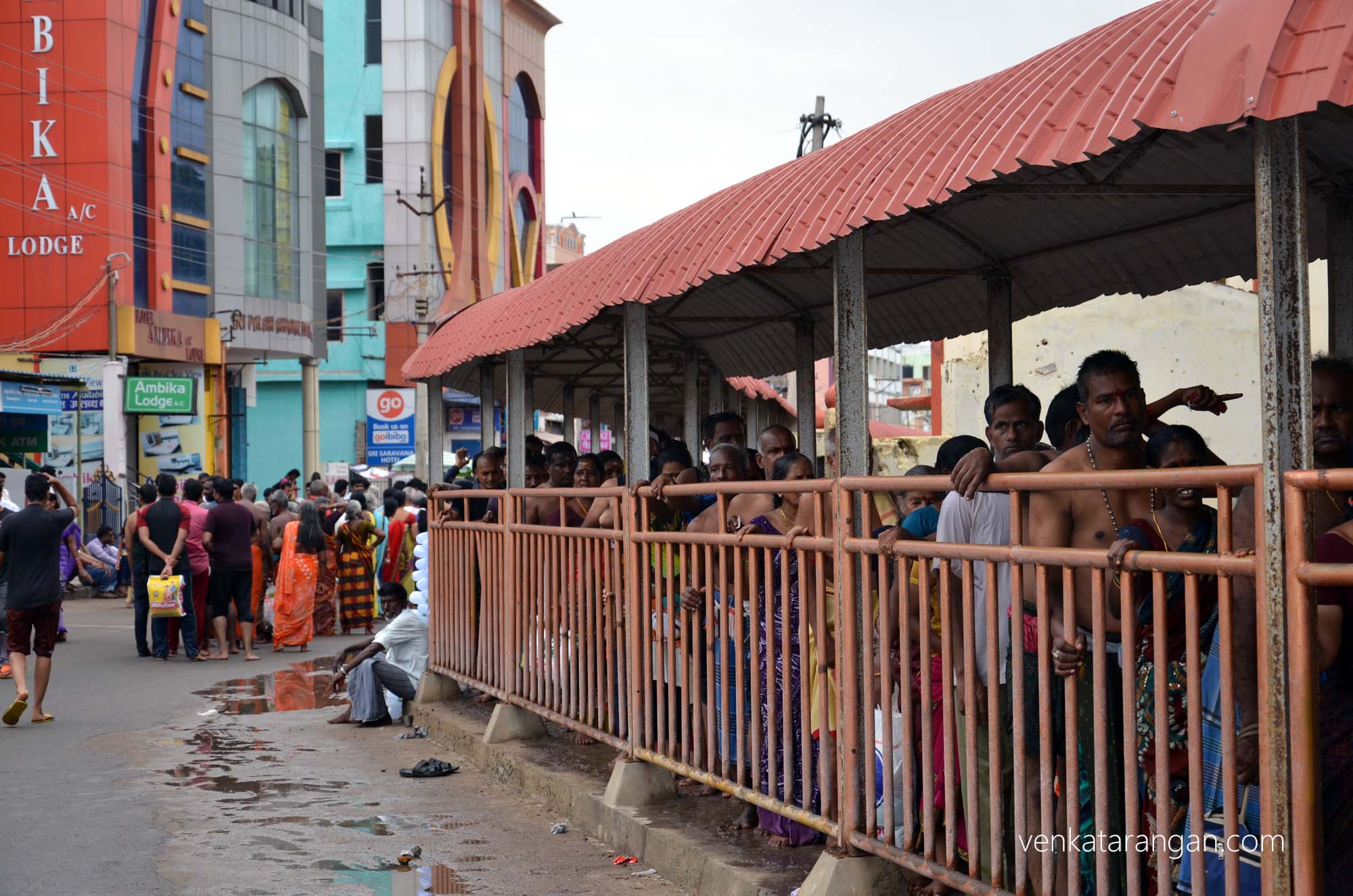
Pilgrims queueing for the holy bath at the 22 theerthams of the temple

Rameswaram is famous for its handy craft items made from conch and seashells – a shop selling decorative lamp holders
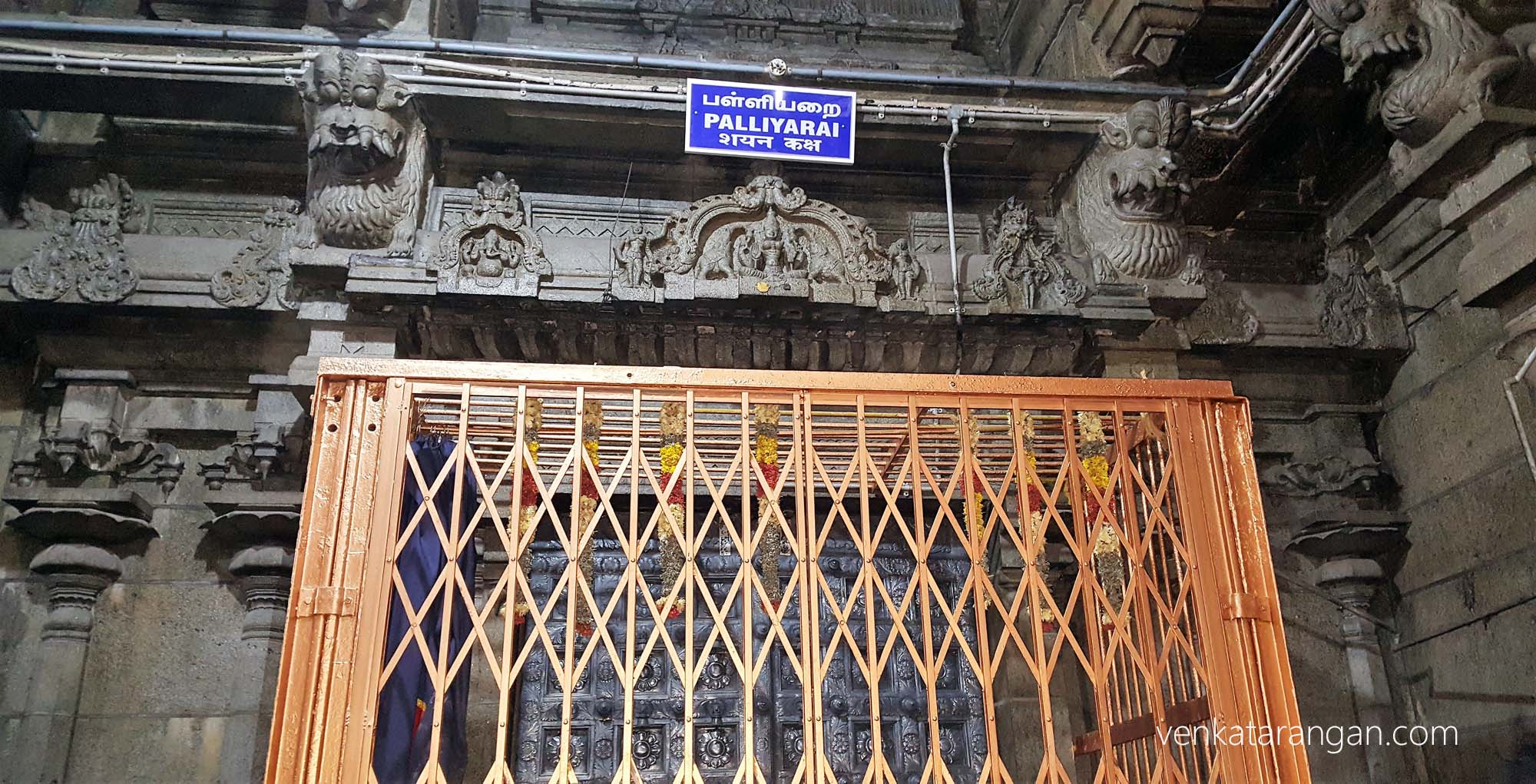
Every inch of the temple is sculptured elegantly with images of Gods and Goddessess
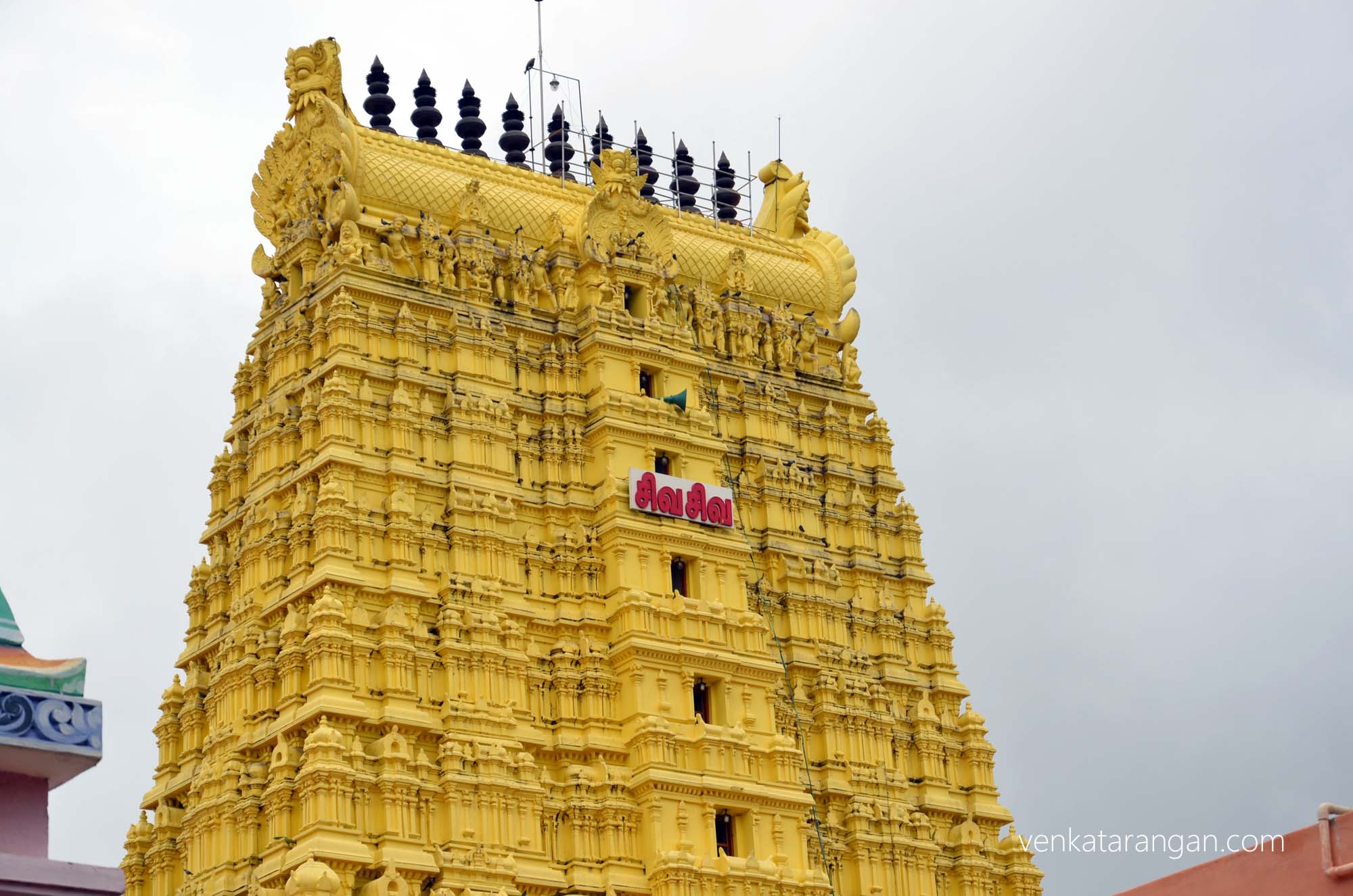
Main tower (Tower) of Ramanathaswamy Temple, Rameswaram
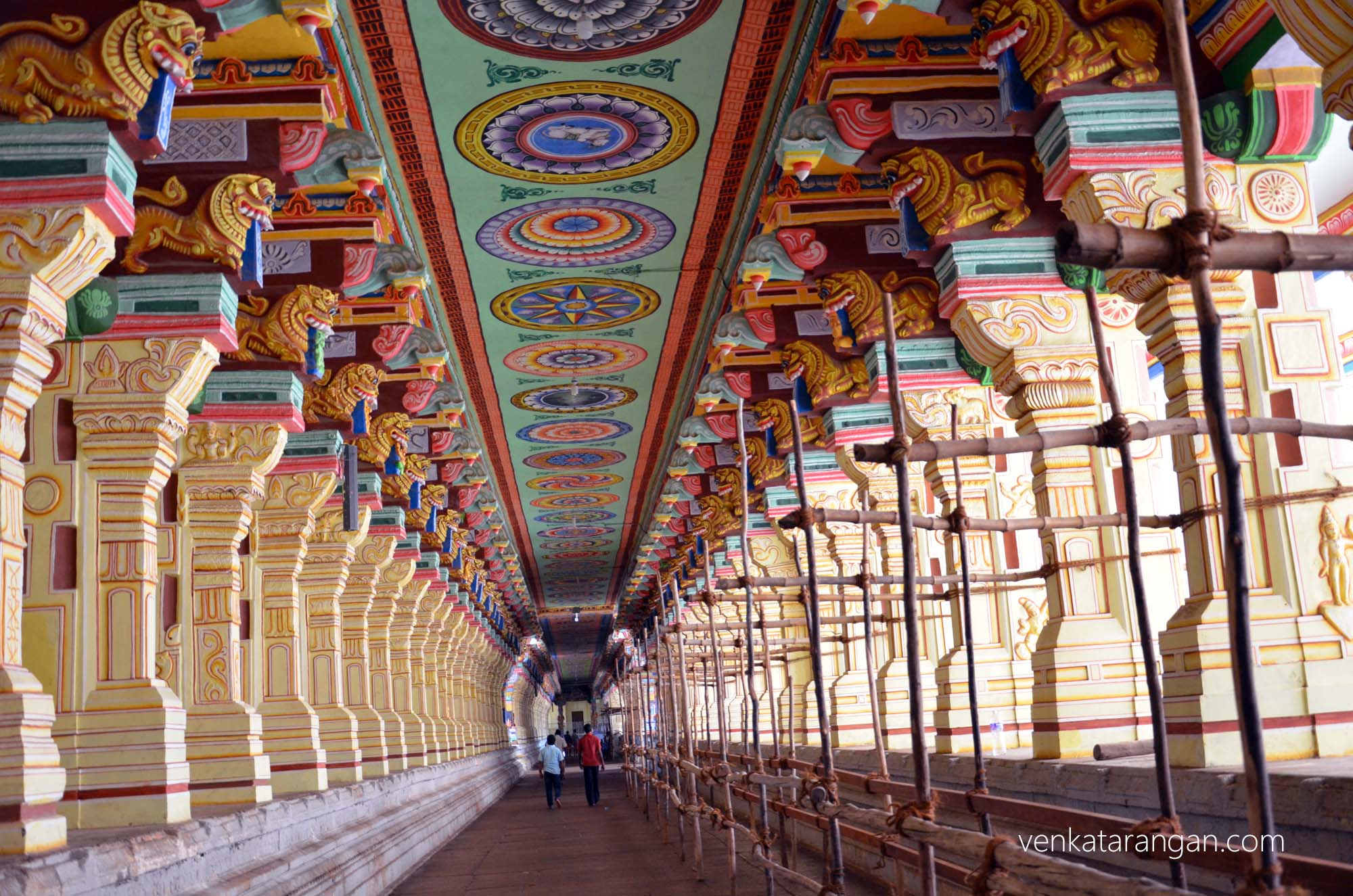
Beautifully decorated temple corridor, one of the longest in India
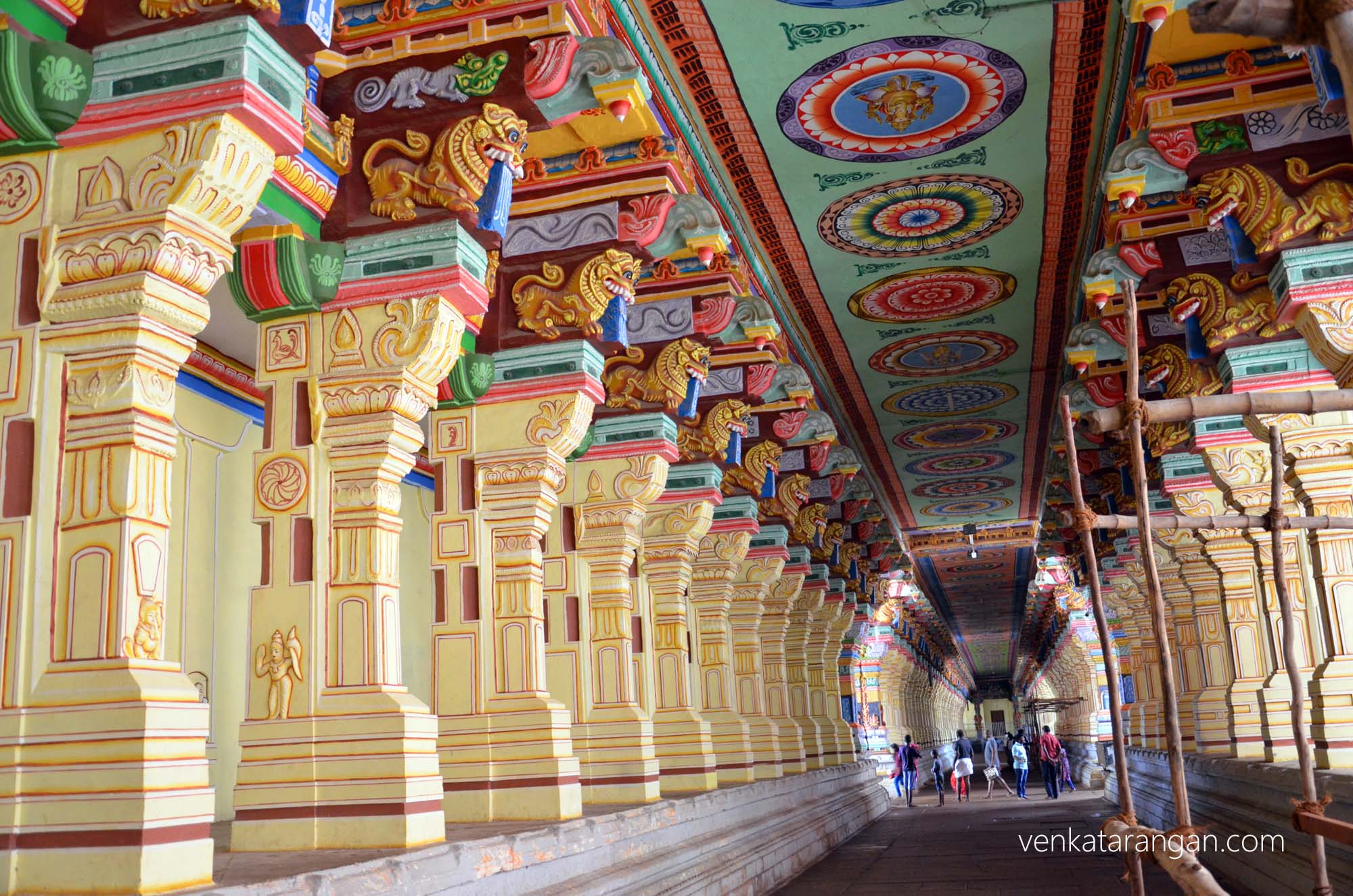
East-West Corridor is 649 feet long; North-South Corridor is 395 feet; Each Pillar is 22 feet in height. Overall 1212 Pillars are at Ramanathaswamy Temple, Rameswaram
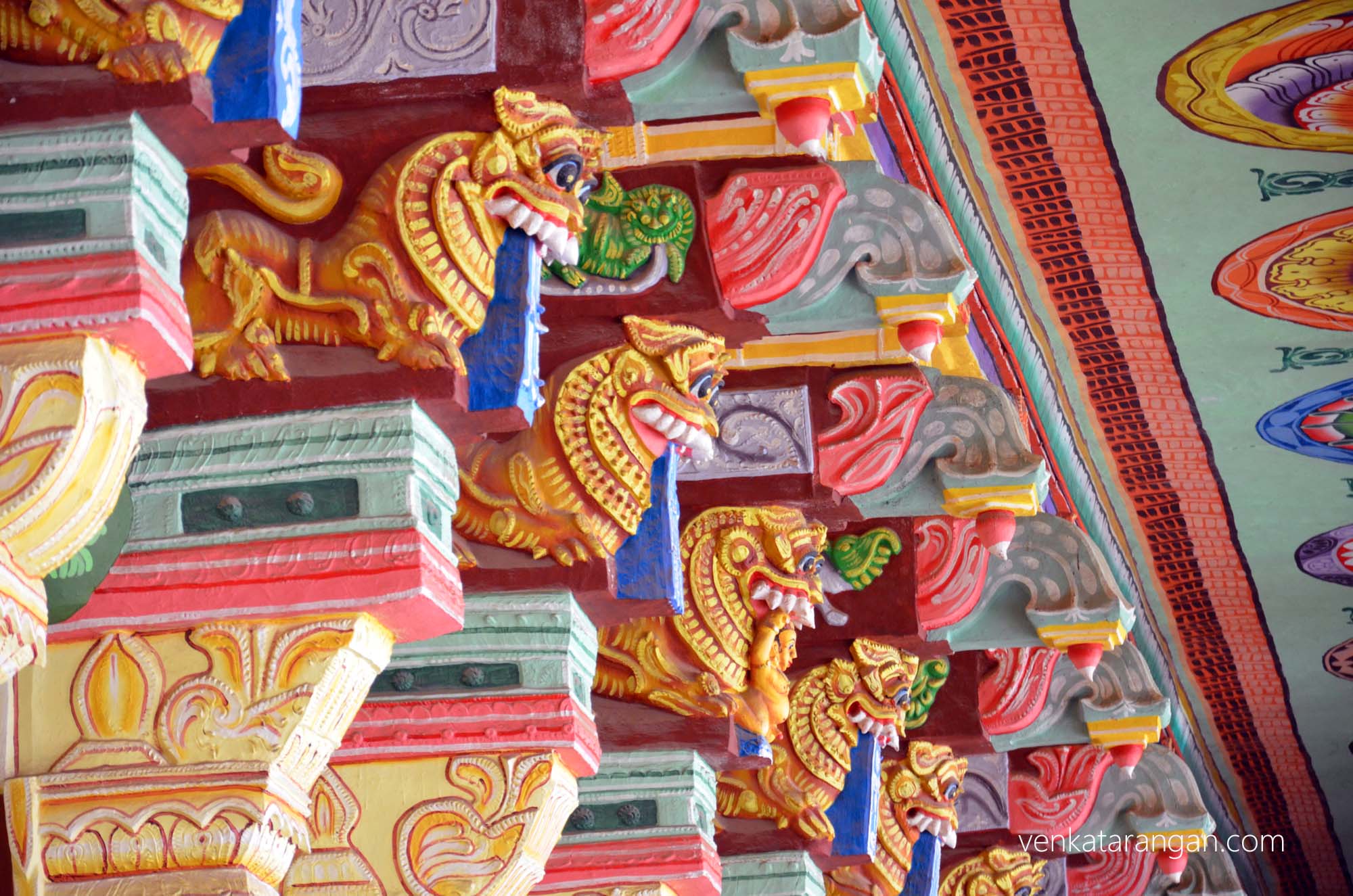
Mythical lions and devas are depicted in every pillar
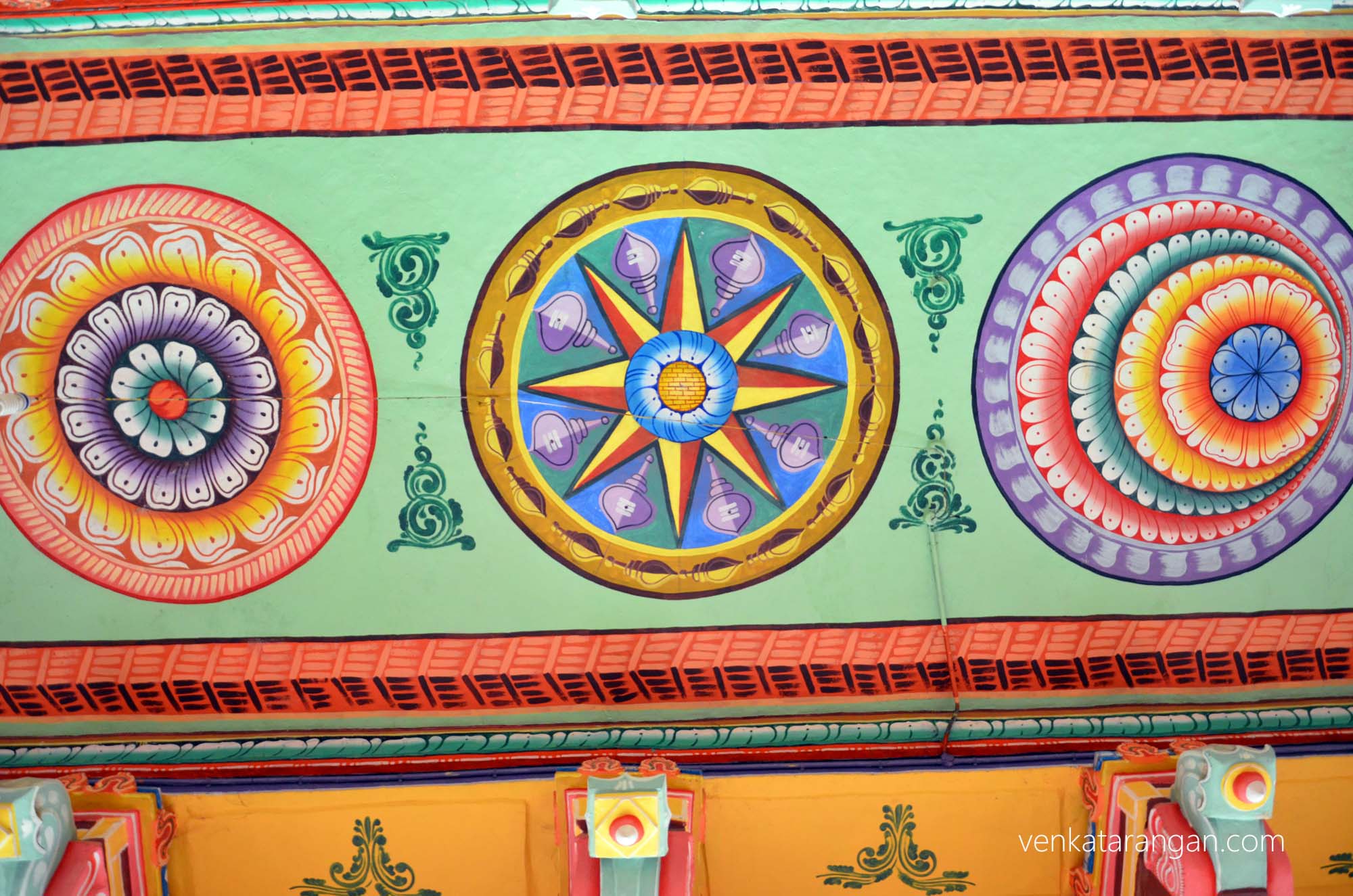
Even the ceilings are beautifully painted – Rameswaram temple corridors
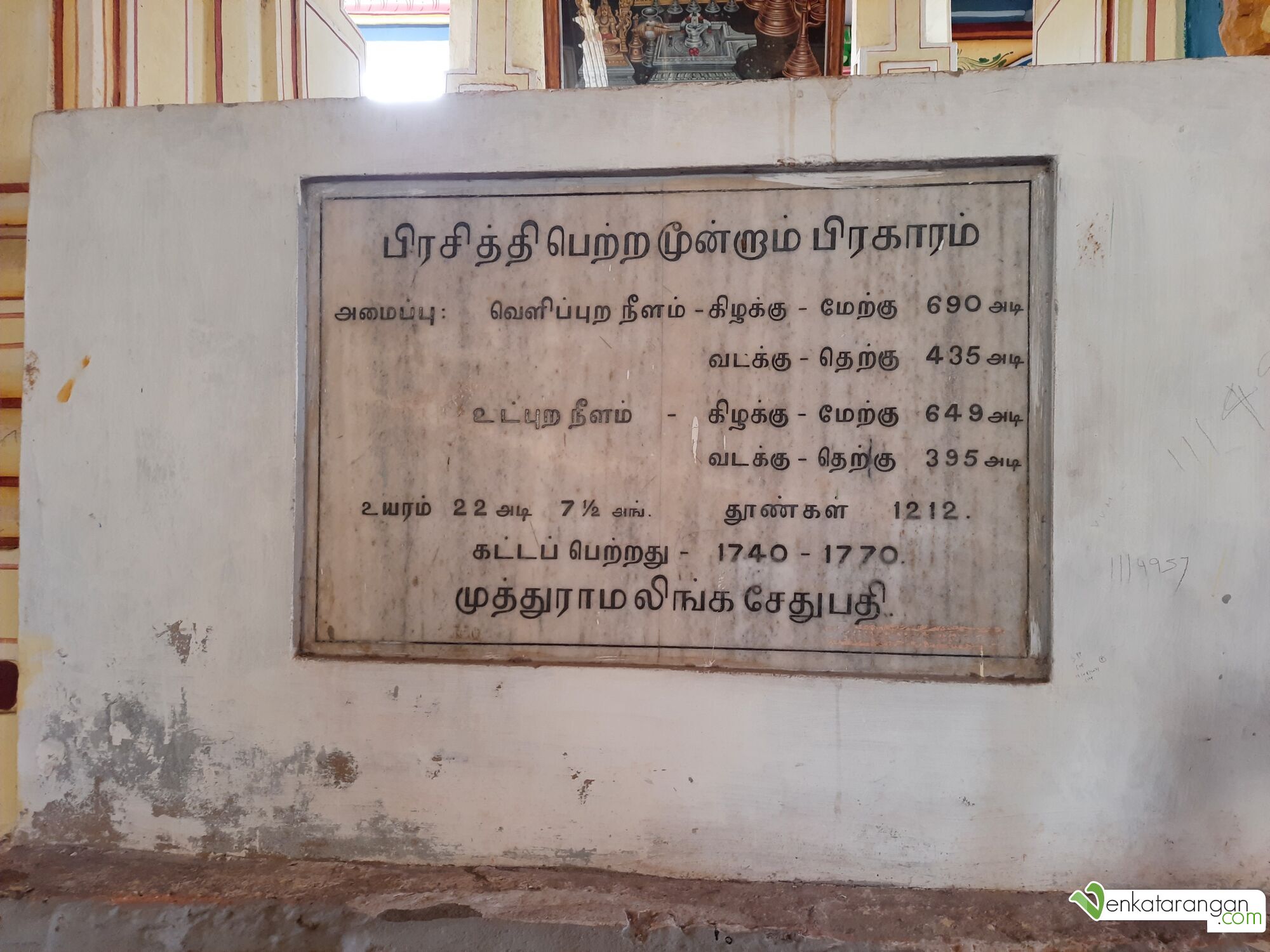
1212 Pillars – இராமேஸ்வரம் இராமநாதசுவாமி கோயில் பிரசித்தி பெற்ற மூன்றாம் பிரகாரம் – தூண்கள் 1212 (Picture taken on February 2022)

Temple Tank – இராமேஸ்வரம் இராமநாதசுவாமி கோயில் திருக்குளம் (Picture taken on February 2022)
Boat Ride near the seashore
After having a good darshan, we went for a boat ride on the sea near Rameswaram temple. The joyride was operated by a small outfit who charged Rs.60 per person for the 30-minute ride on the sea close to the shore. Apart from us, there were about 50 passengers who went on the ride, which were being operated continuously during the day.
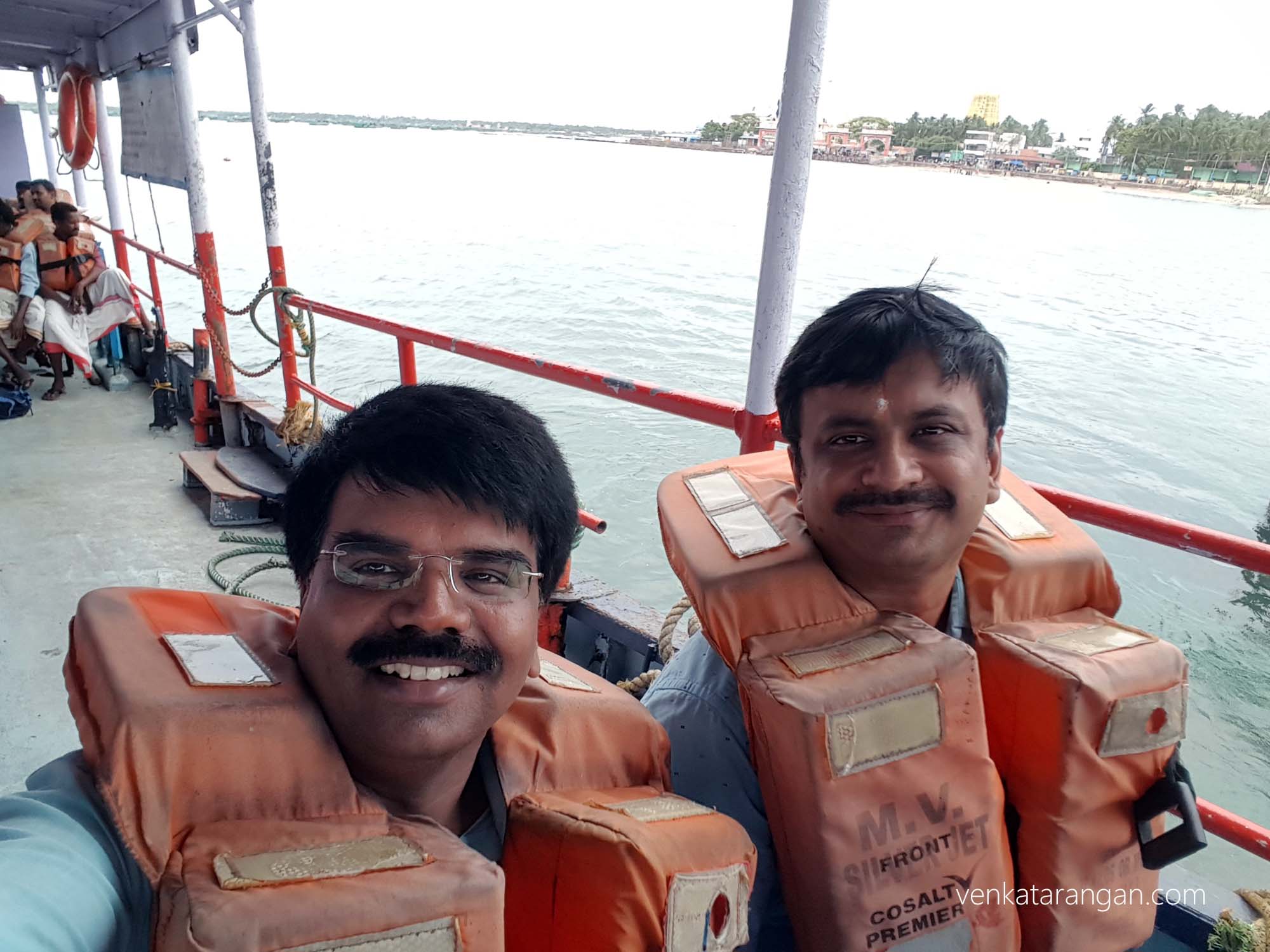
With my friend E.Ravi (on the left)
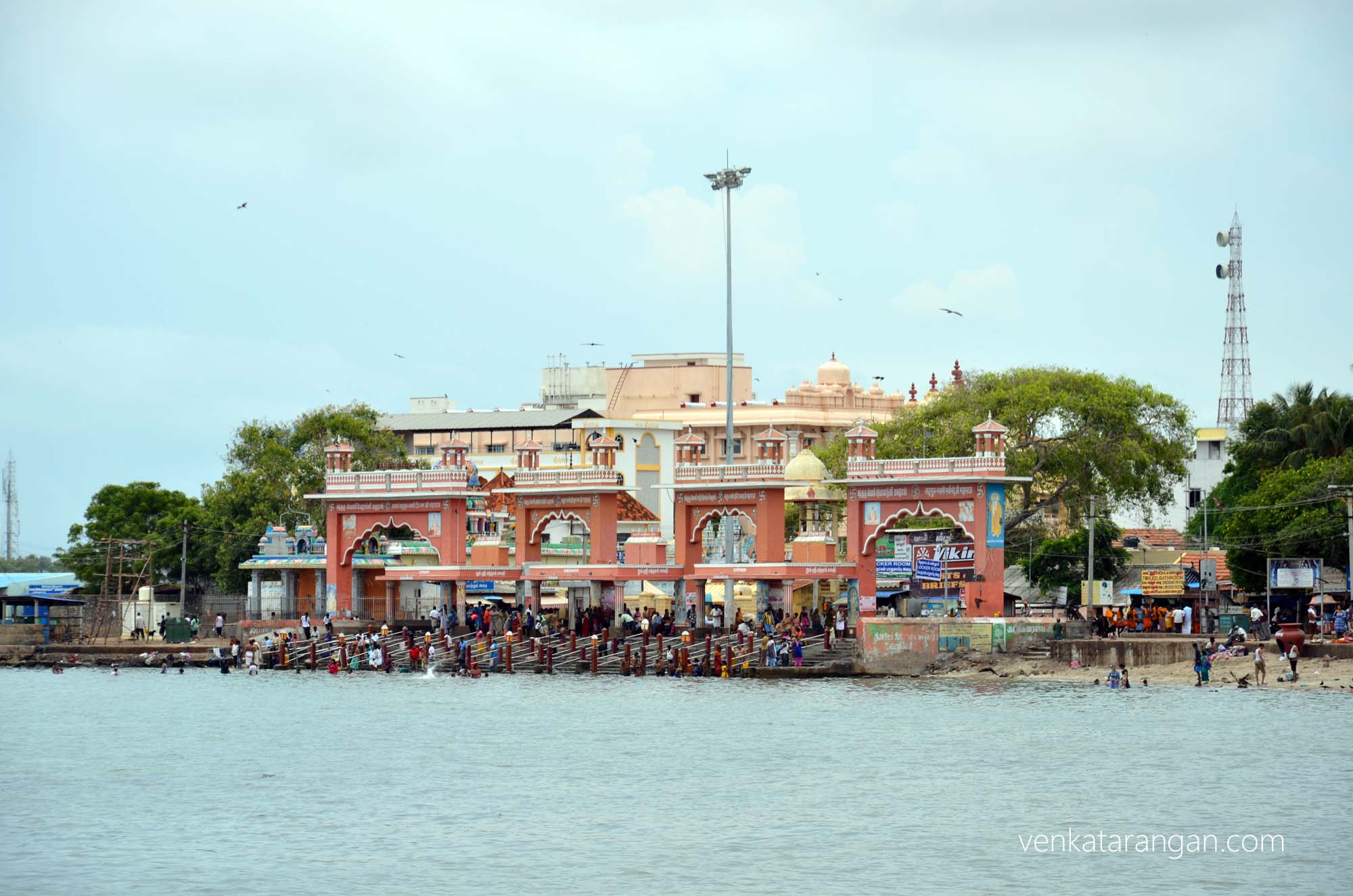
One of the bathing ghats
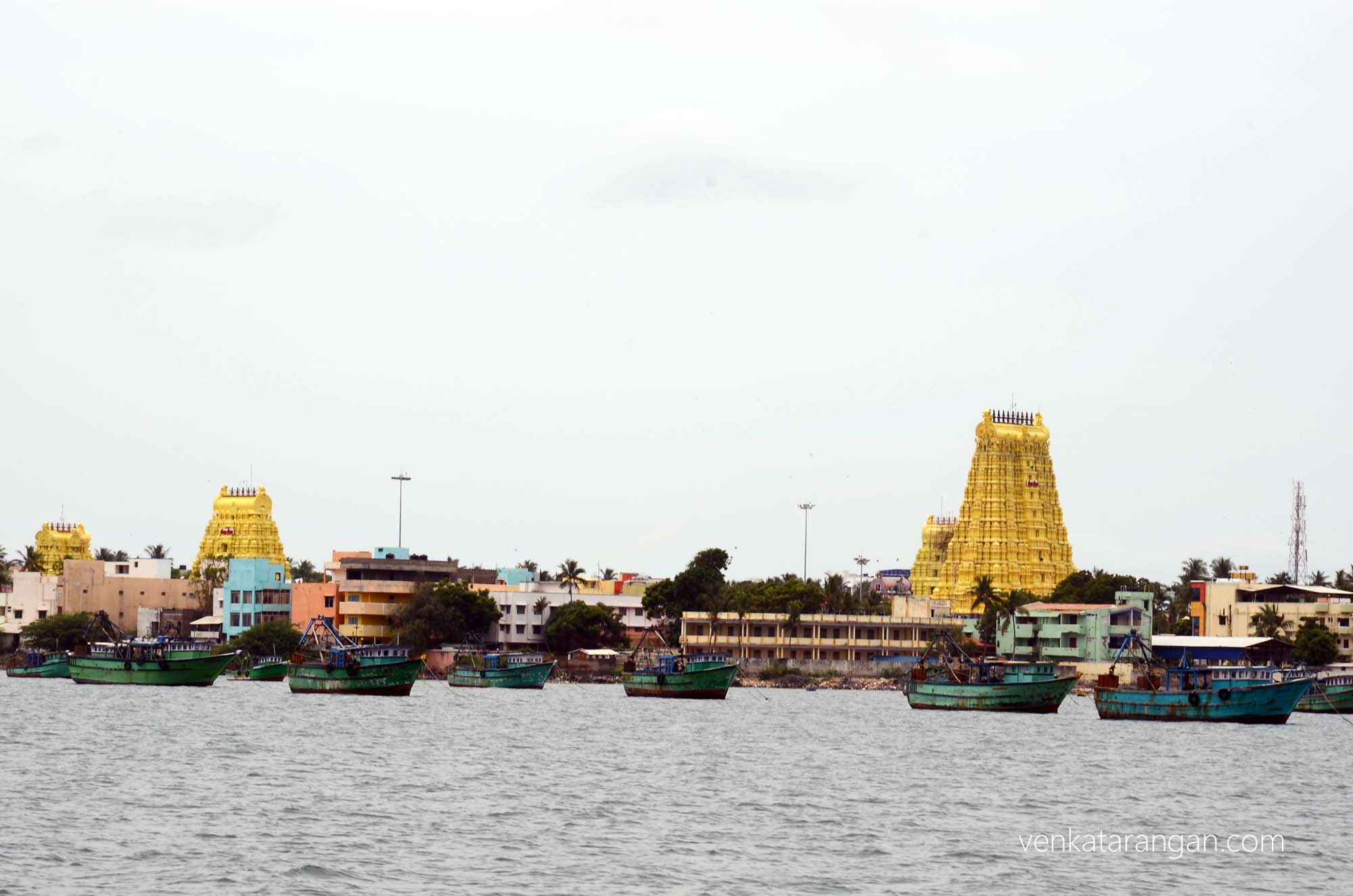
View from sea all the four gopurams of Ramanathaswamy temple, Rameswaram
After lunch on the first day of our stay in Rameswaram, we went to House of Kalam and then to Dr A P J Abdul Kalam Memorial at Peikarumbu.
Dhanushkodi
On the second day, we decided to first visit Dhanushkodi (தனுஷ்கோடி) town which was destroyed completely during the 1964 cyclone and remains uninhabited for decades. A few months back, during the visit by Prime Minister Of India, a new road was constructed connecting Dhanushkodi to Rameswaram Island. We were told by local residents, after the new road, thousands of tourist are visiting Dhanushkodi every day and tourism is booming.
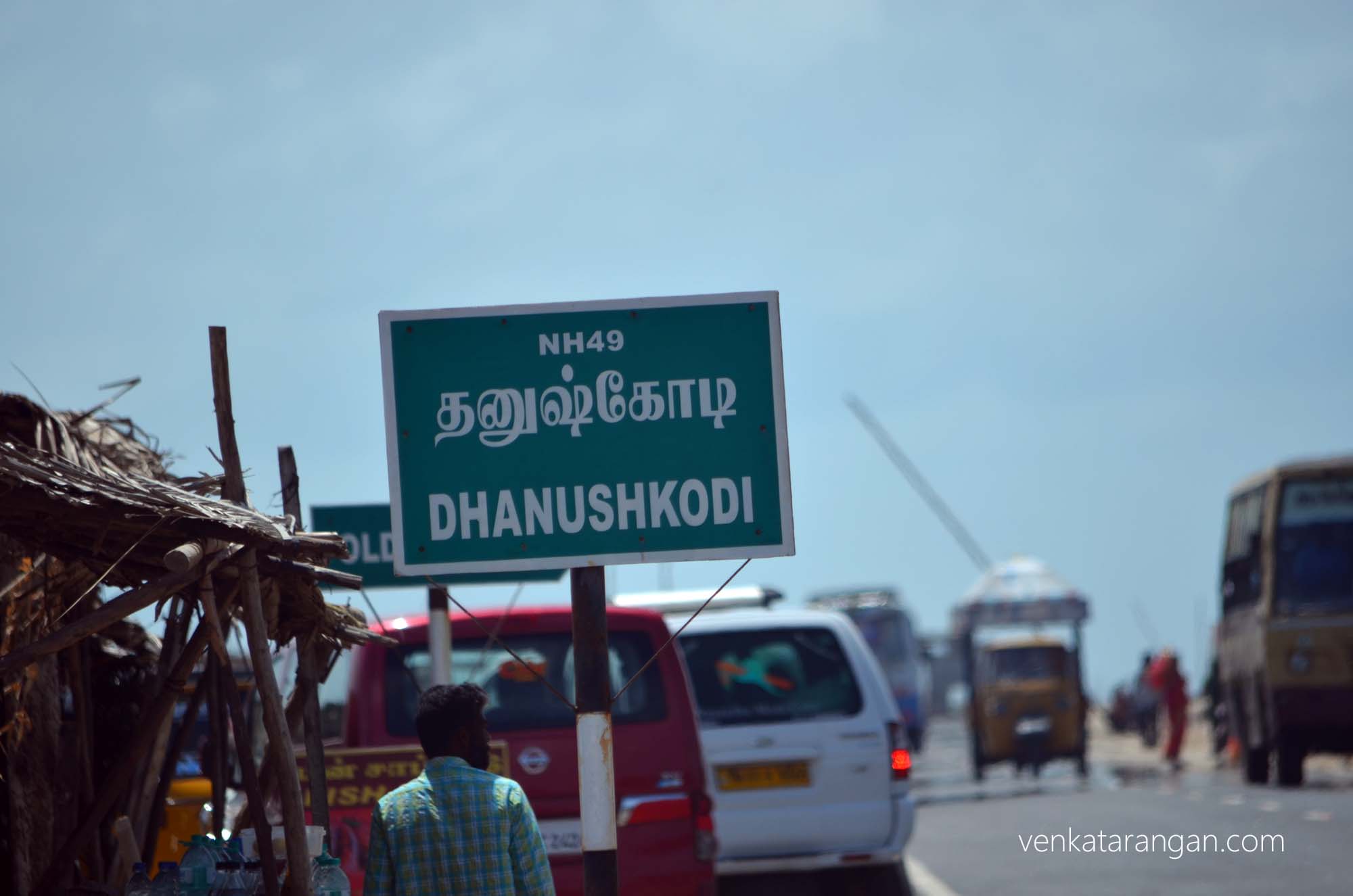
Dhanushkodi (தனுஷ்கோடி) town – National Highway 49
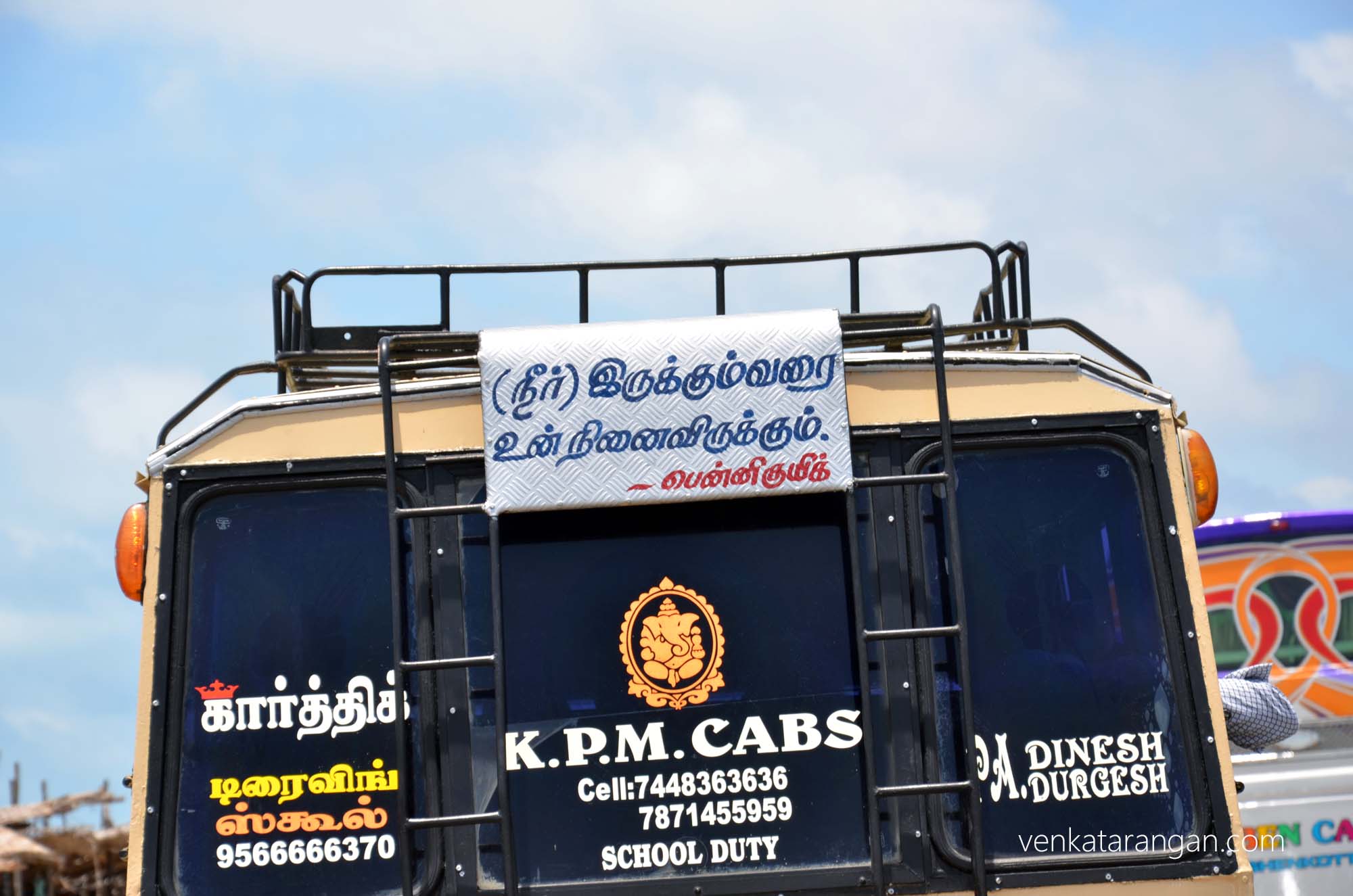
(நீர்) இருக்கும்வரை உன் நினைவிருக்கும் – பென்னிகுயிக். A poem dedicated to British Engineer John Pennycuick who built Mullaiperiyar dam.
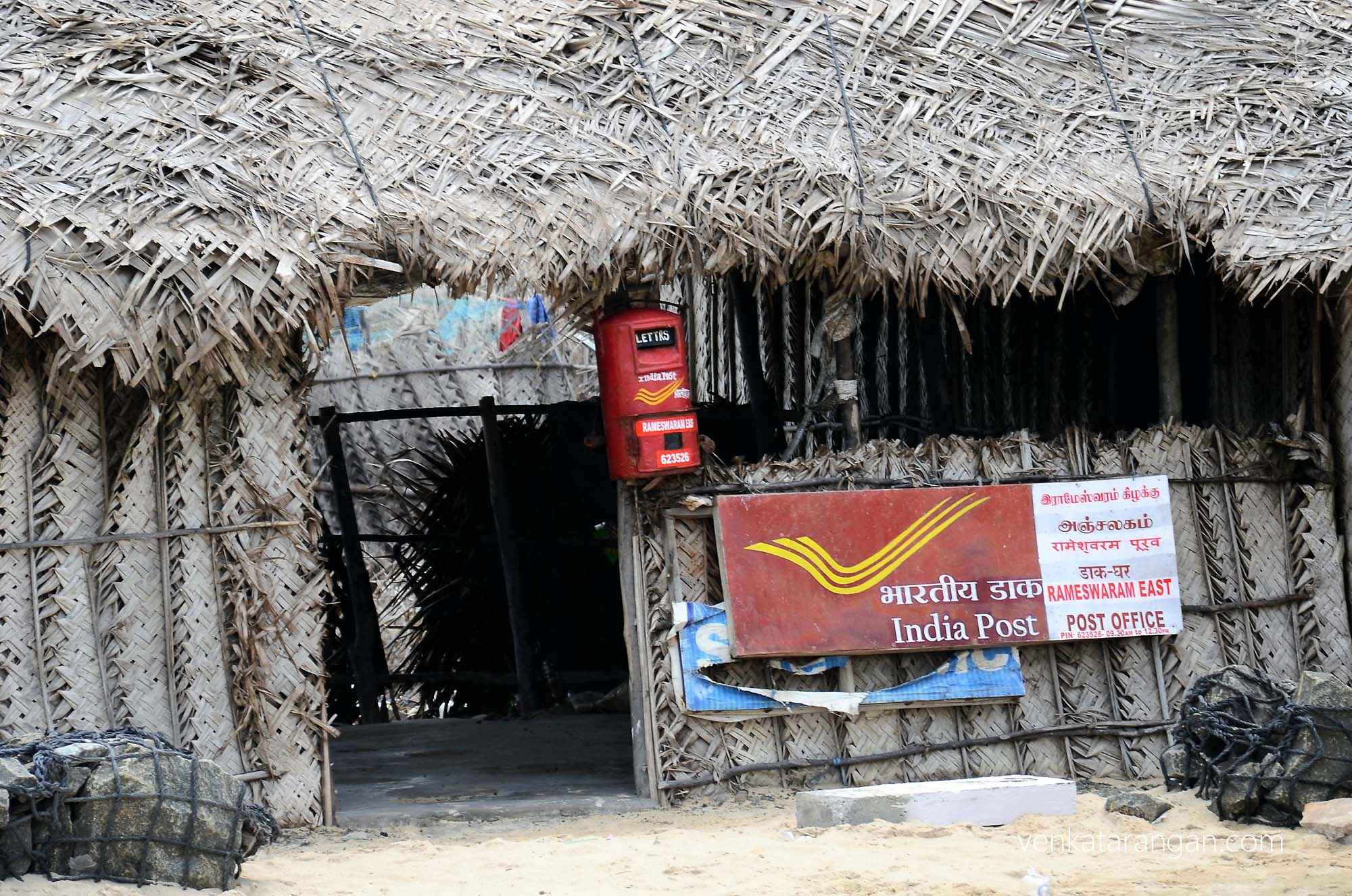
India Post – Post Office functioning from a hut
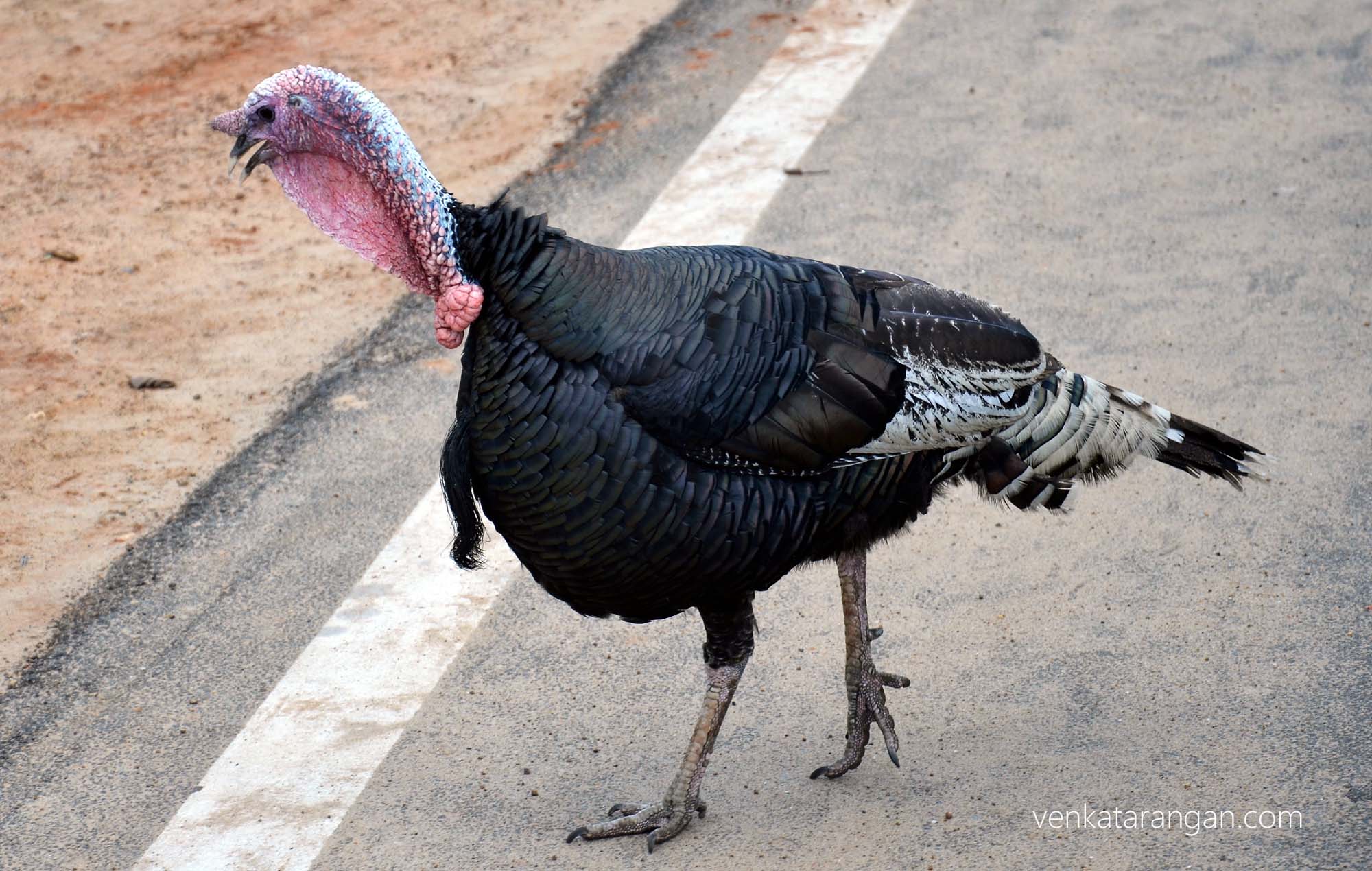
Turkey?
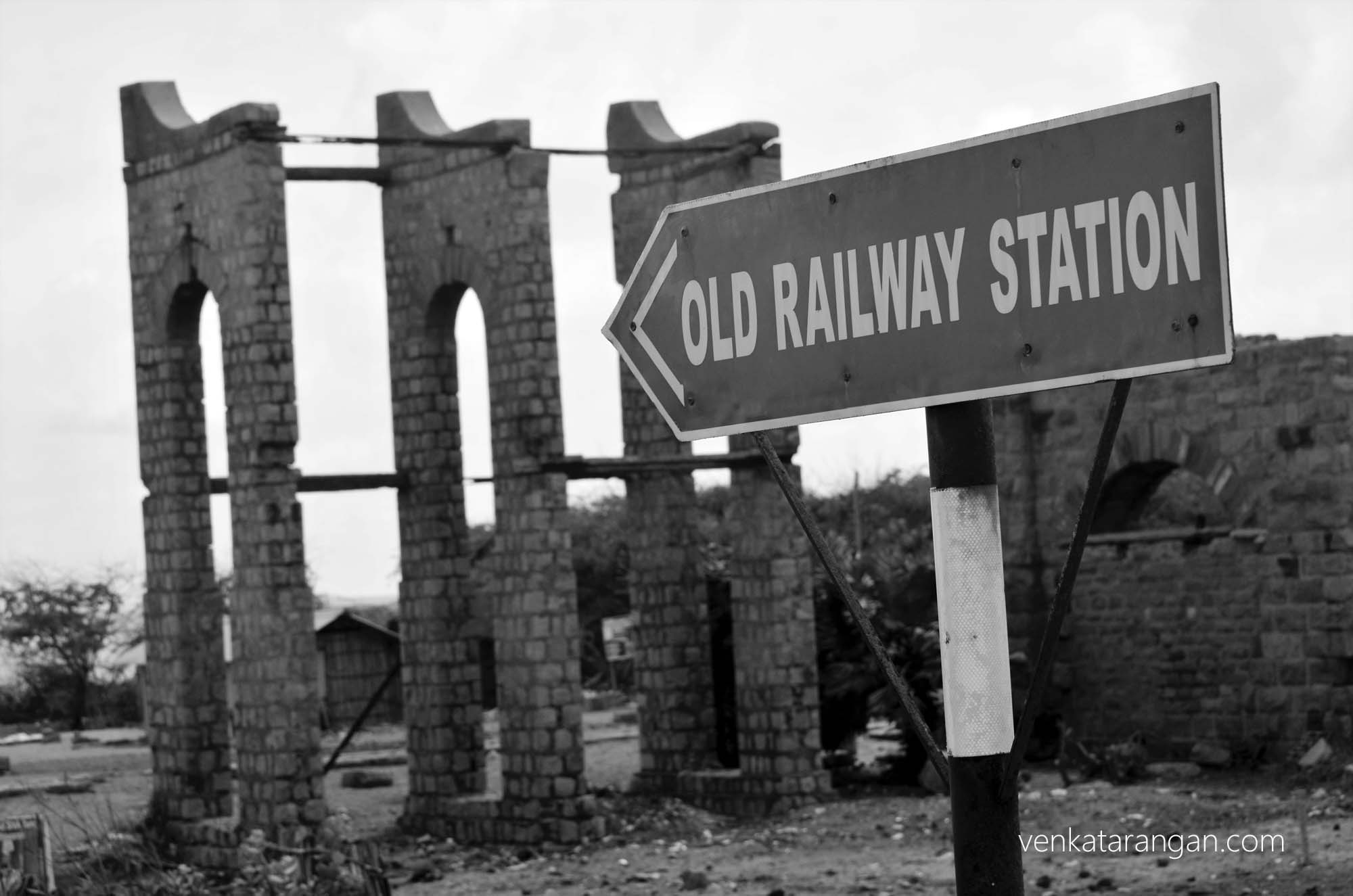
Old railway station – Dhanushkodi
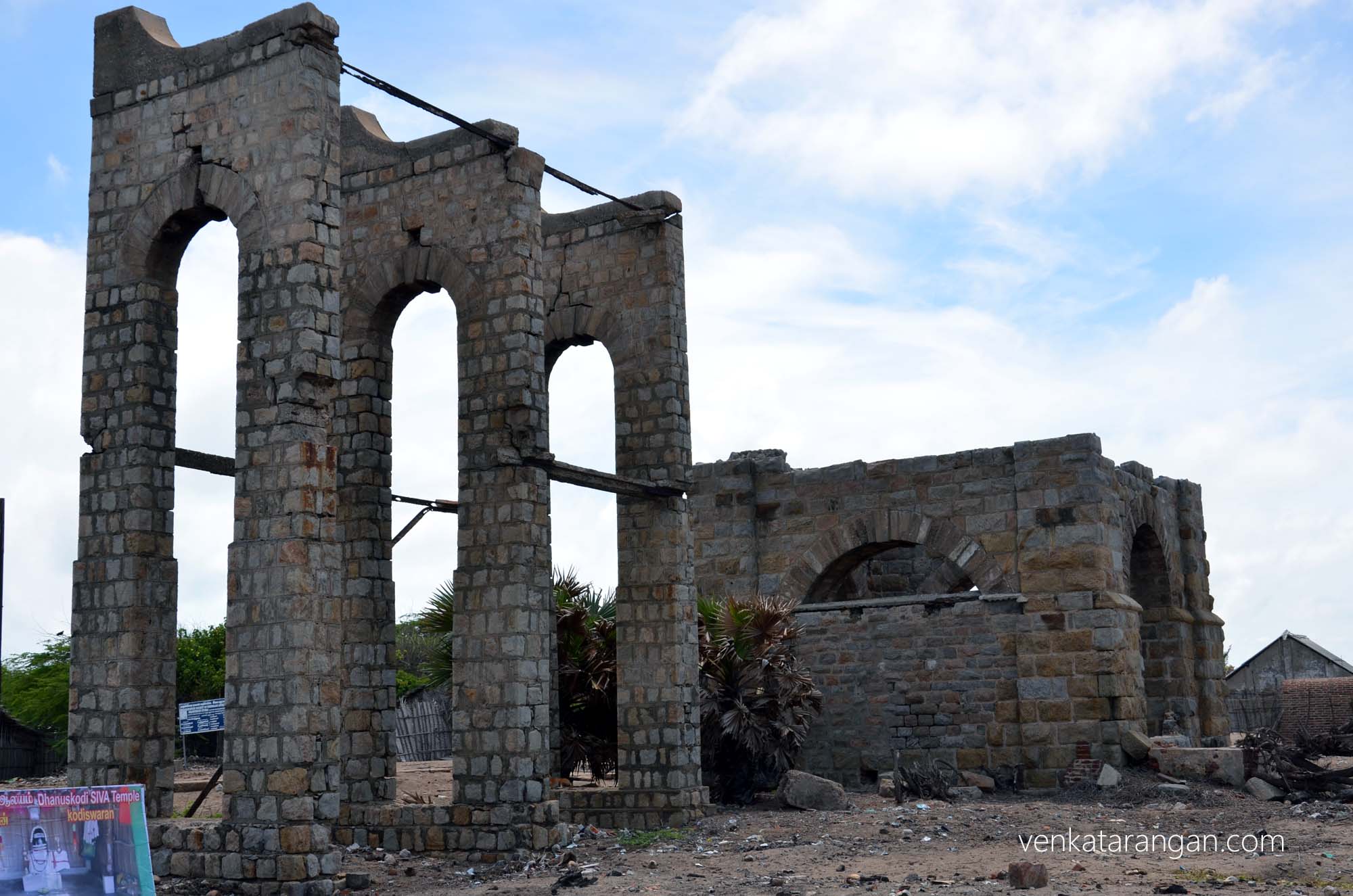
What remains of the old railway station – Dhanushkodi
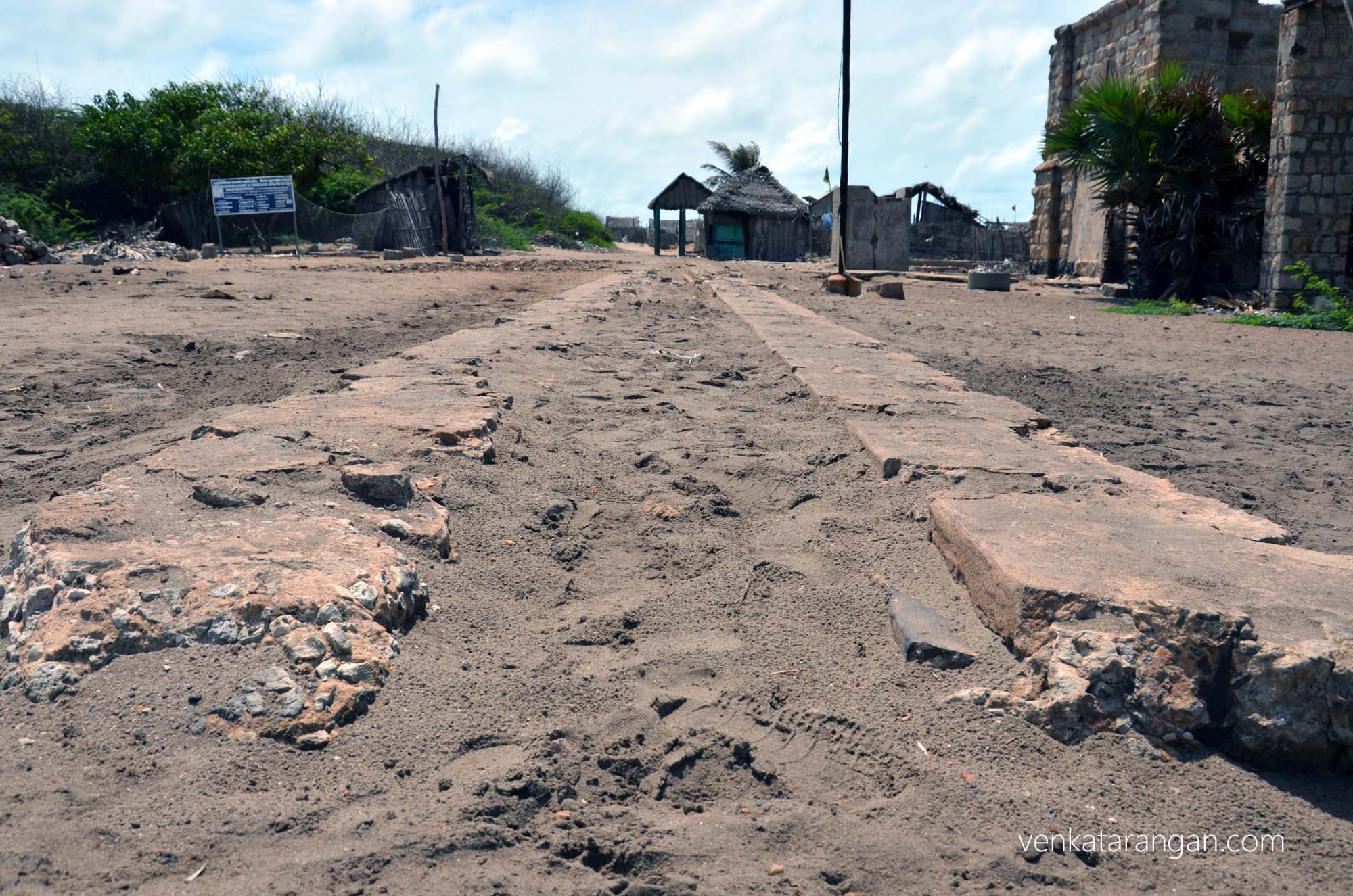
What remains of the destroyed railway track
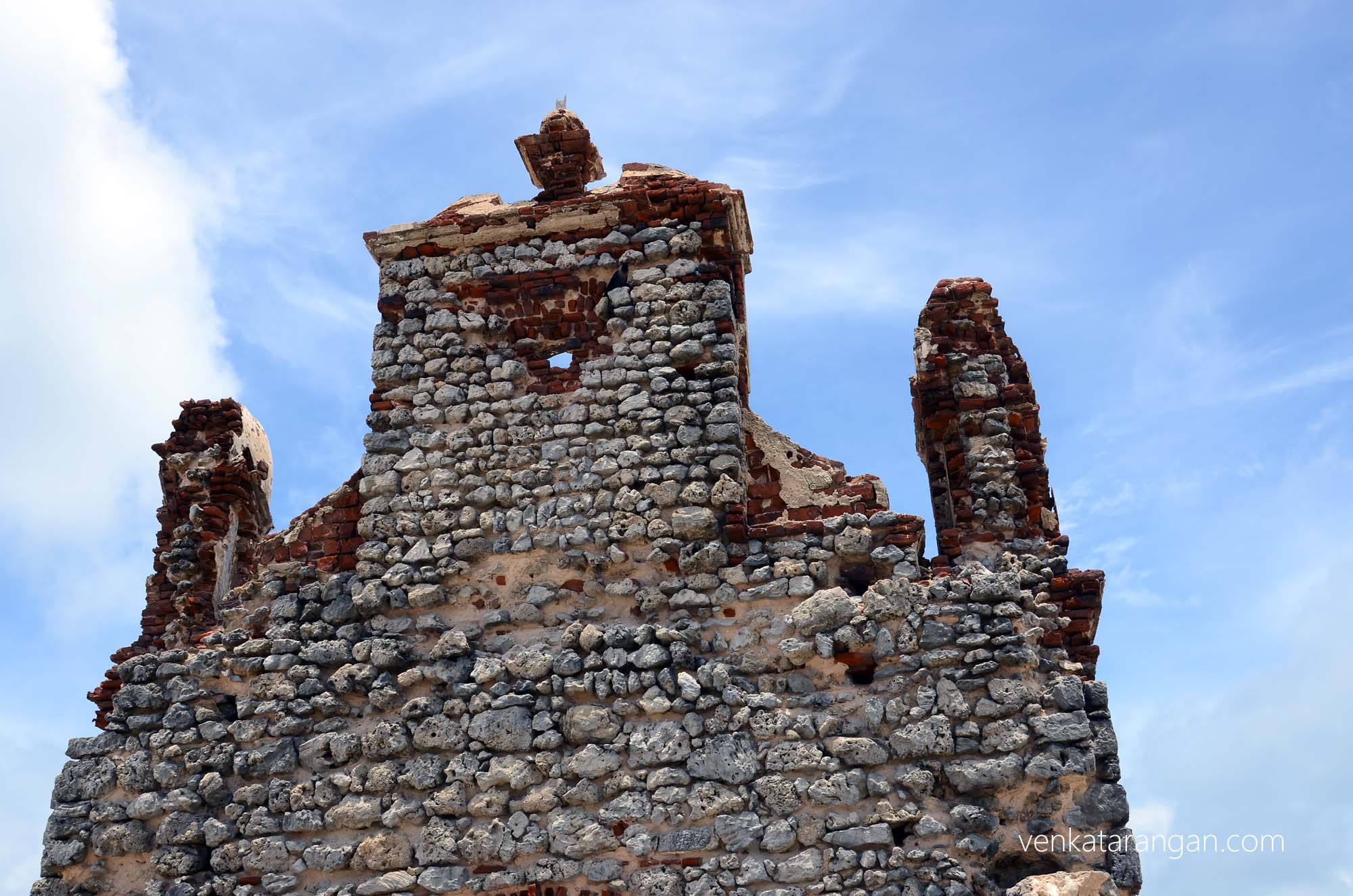
Inside view of the front wall of the destroyed Church
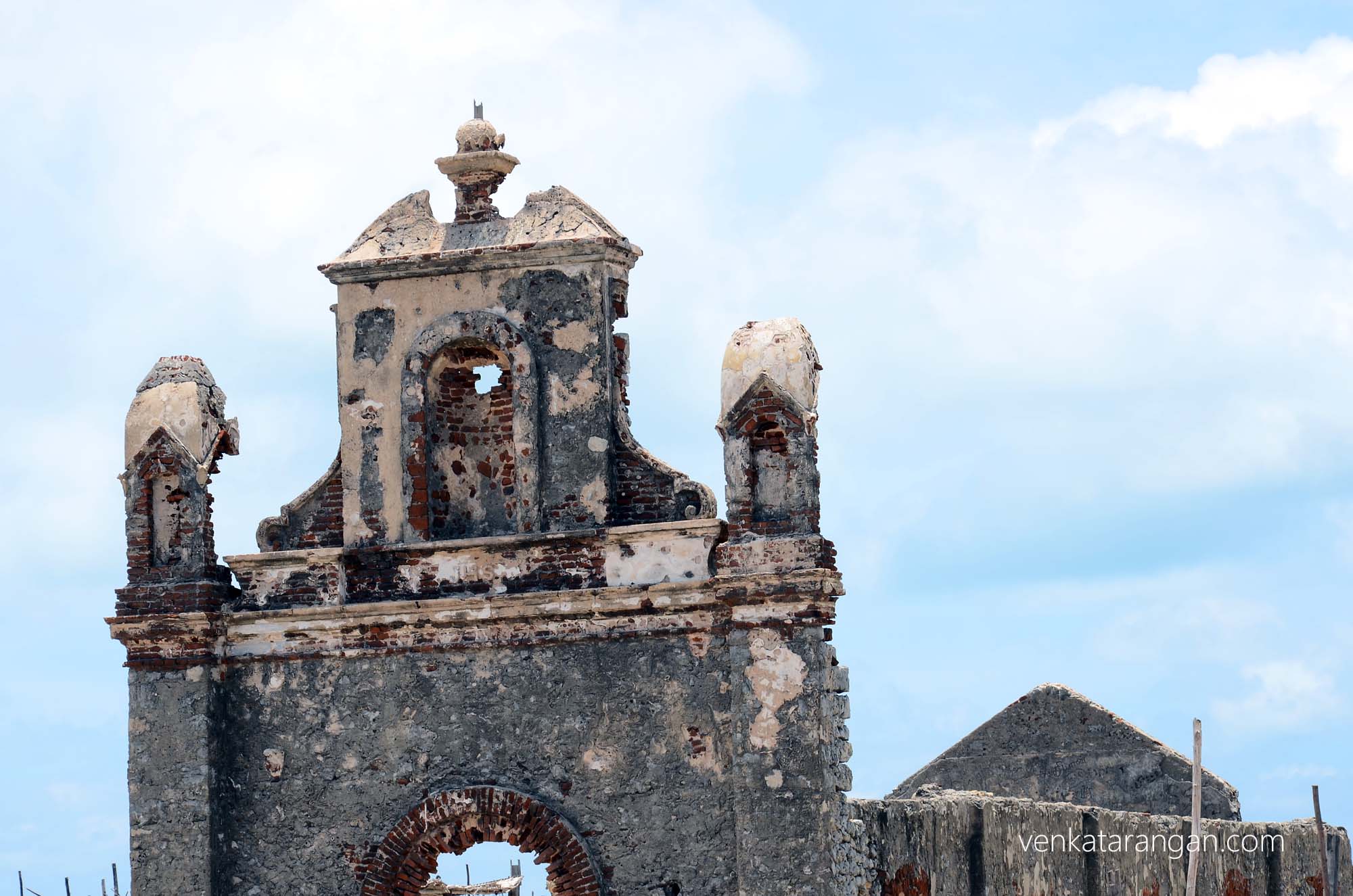
Front facade of the destroyed Church – Dhanushkodi
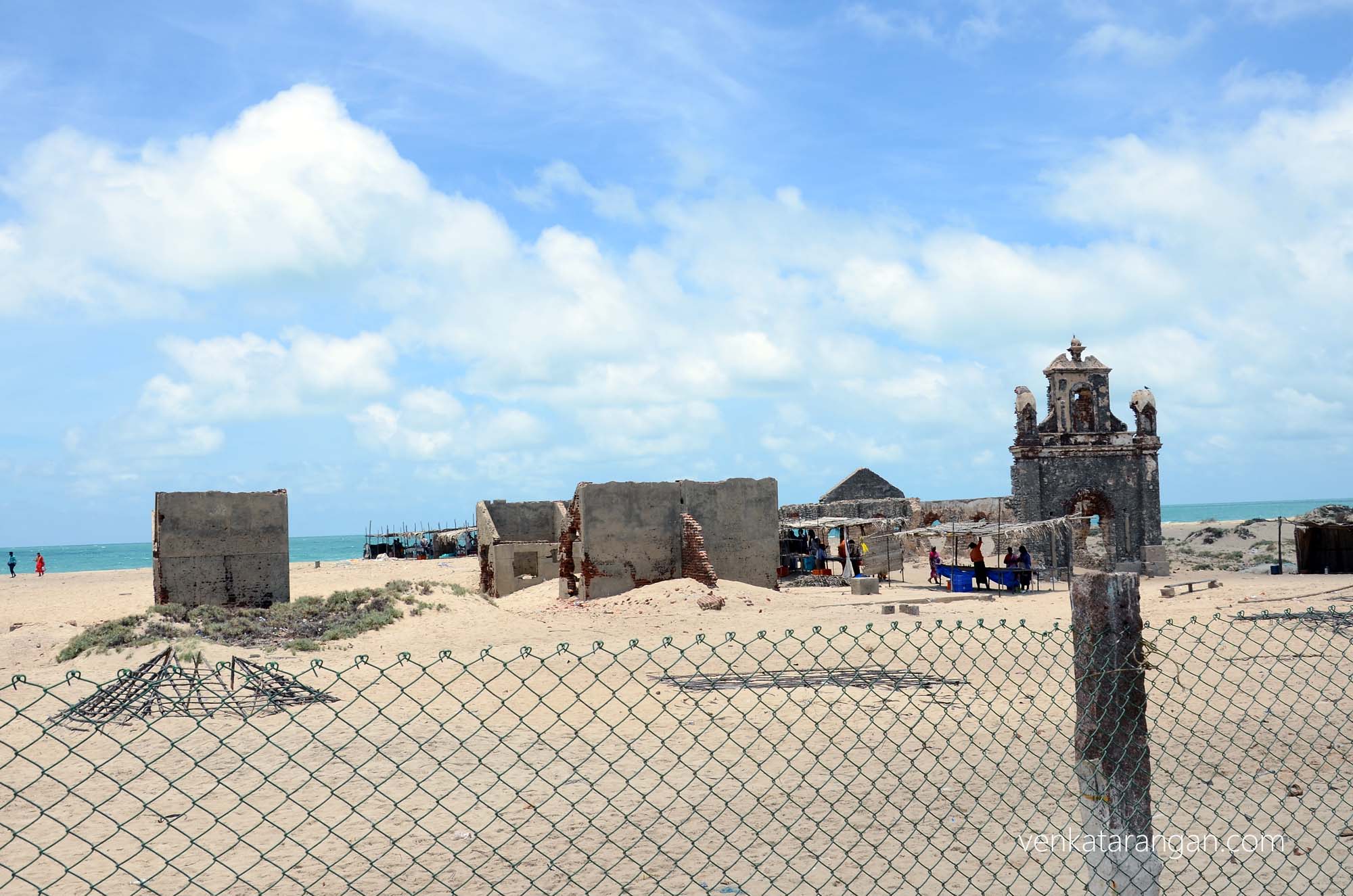
Ruins of the chapel – Dhanushkodi
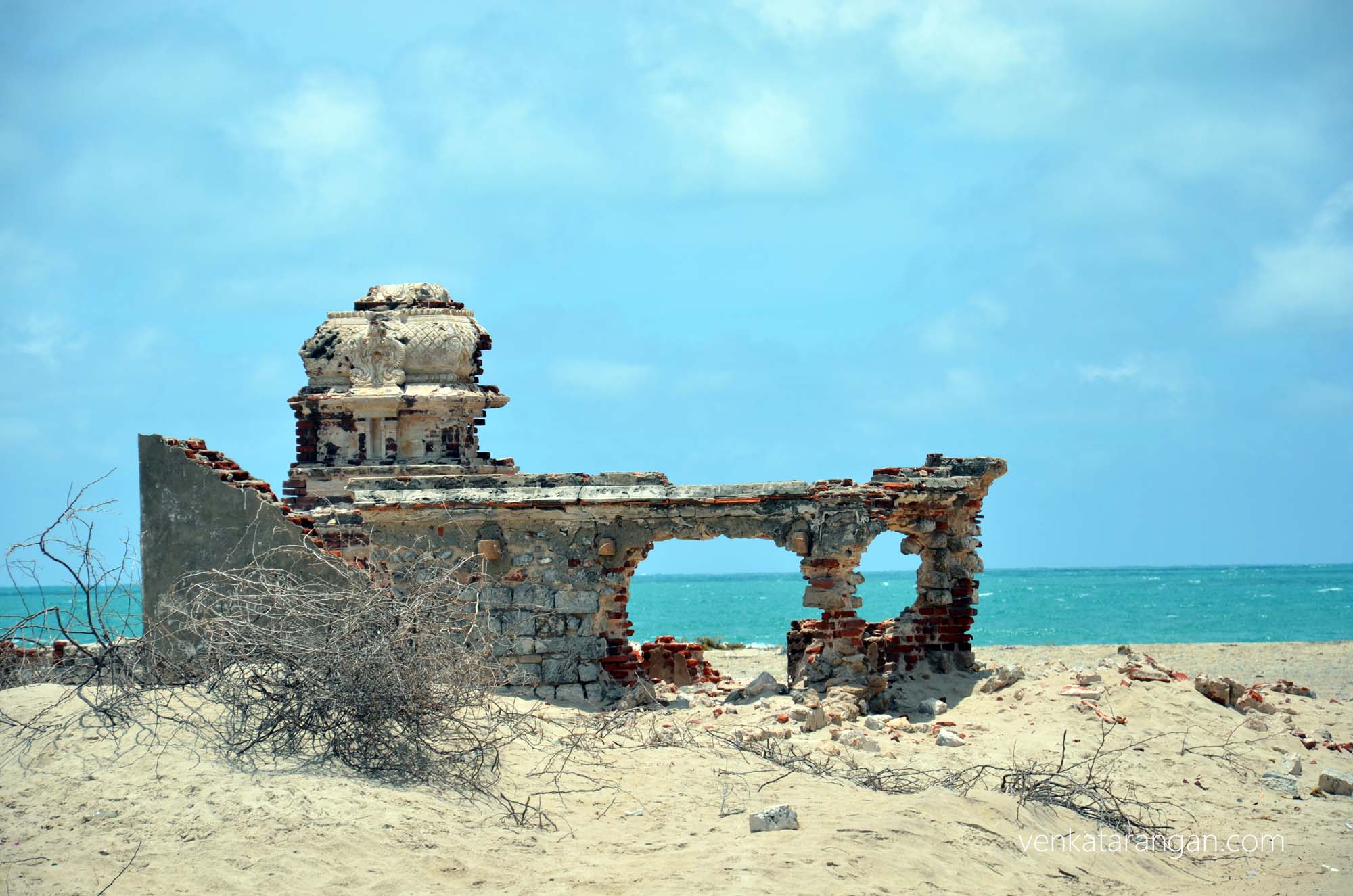
Ruins of the Hindu Temple, standing next to the Chapel – Dhanushkodi
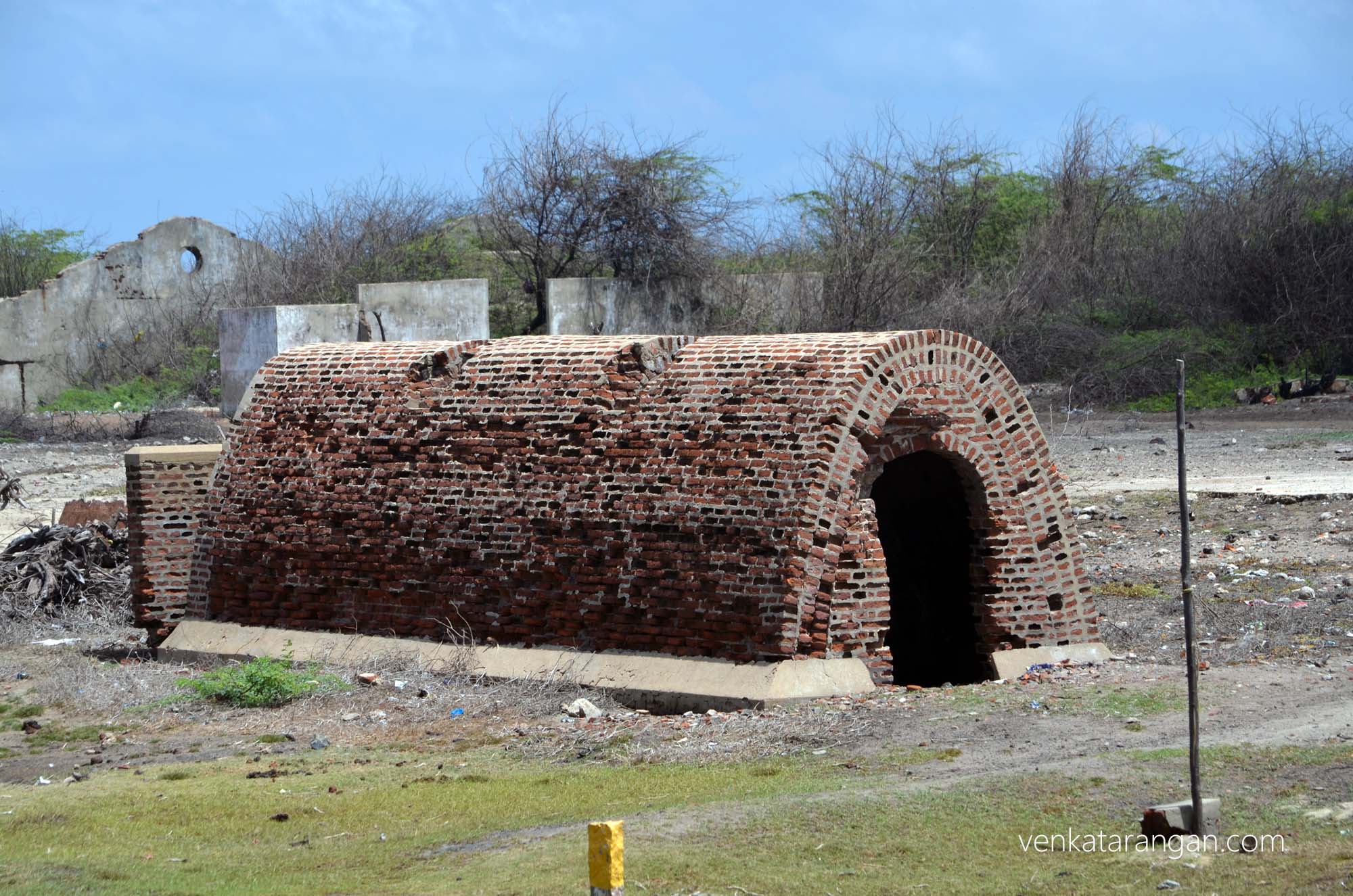
More ruins – Dhanushkodi
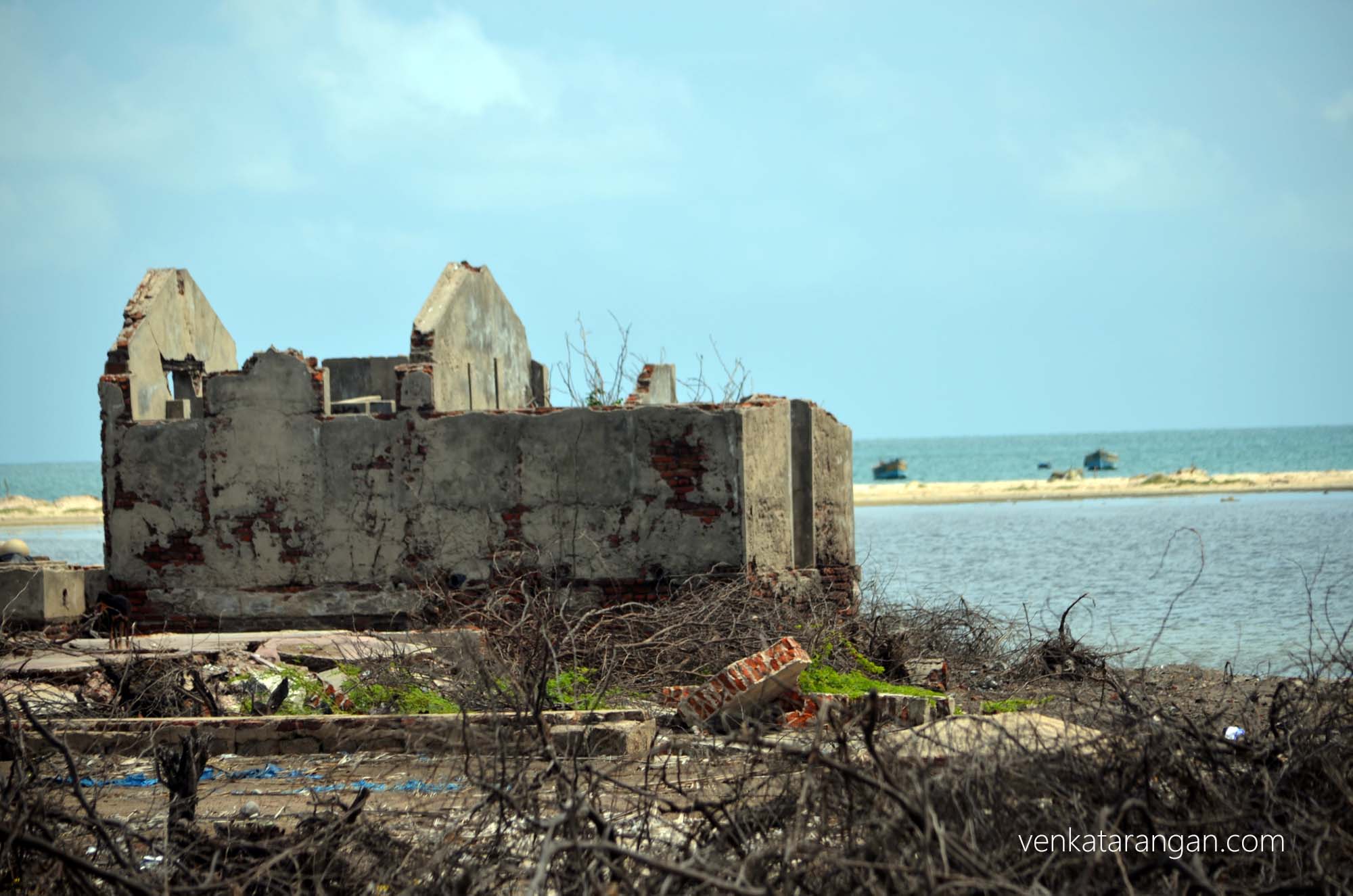
Destroyed houses in Dhanushkodi
Dhanushkodi was off-limits for civilians for many decades, during that period it was rumoured to be a heaven of smuggling and for being the port of entry for illegal immigrants from Sri Lanka during the civil war in that country. Now, it feels like any other popular tourist destination in India – crowded with people everywhere, hundreds of vehicles and shops selling everything from showpieces to coconut water.
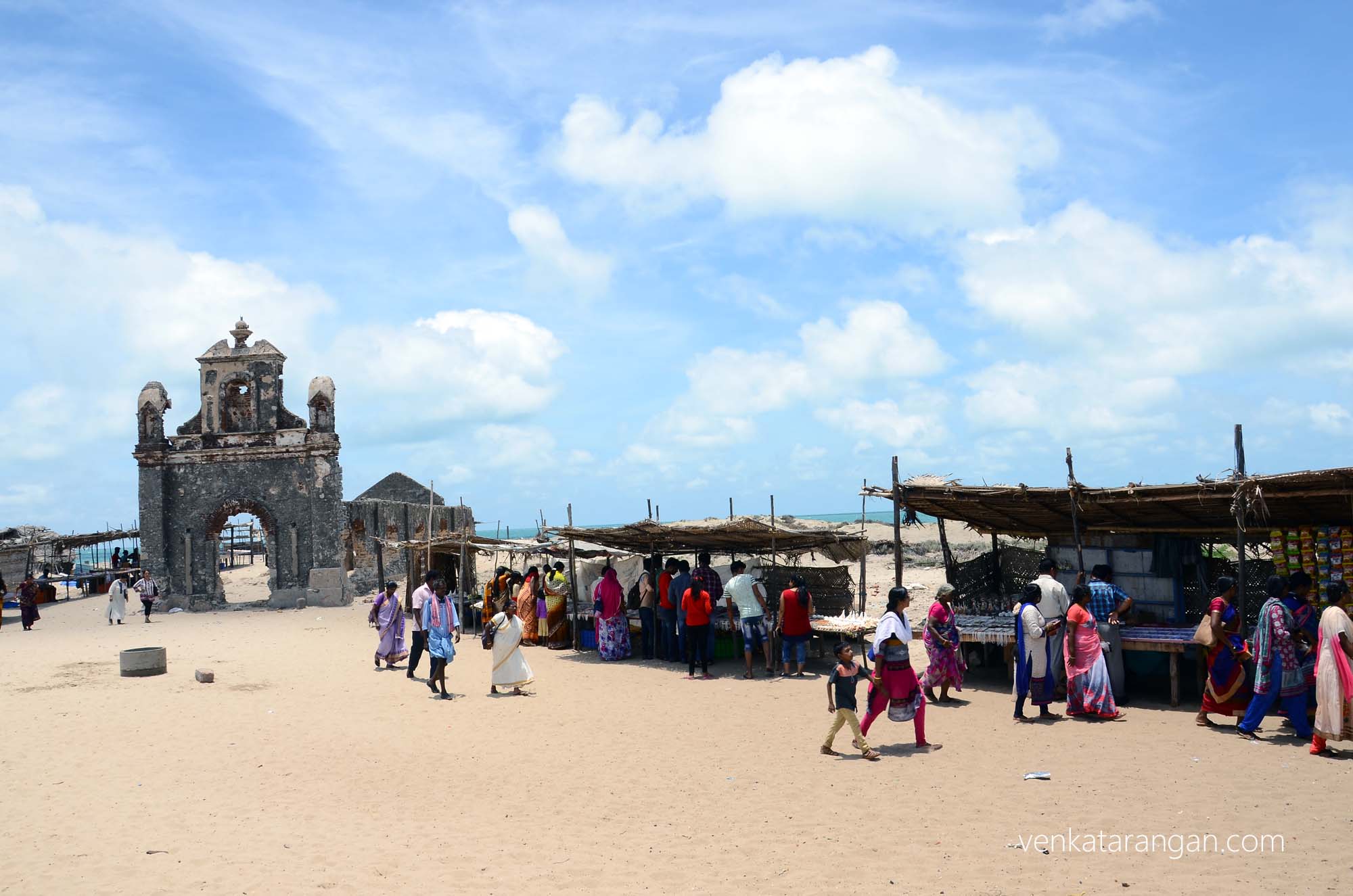
Shops selling seashells and even ‘lays’ chips
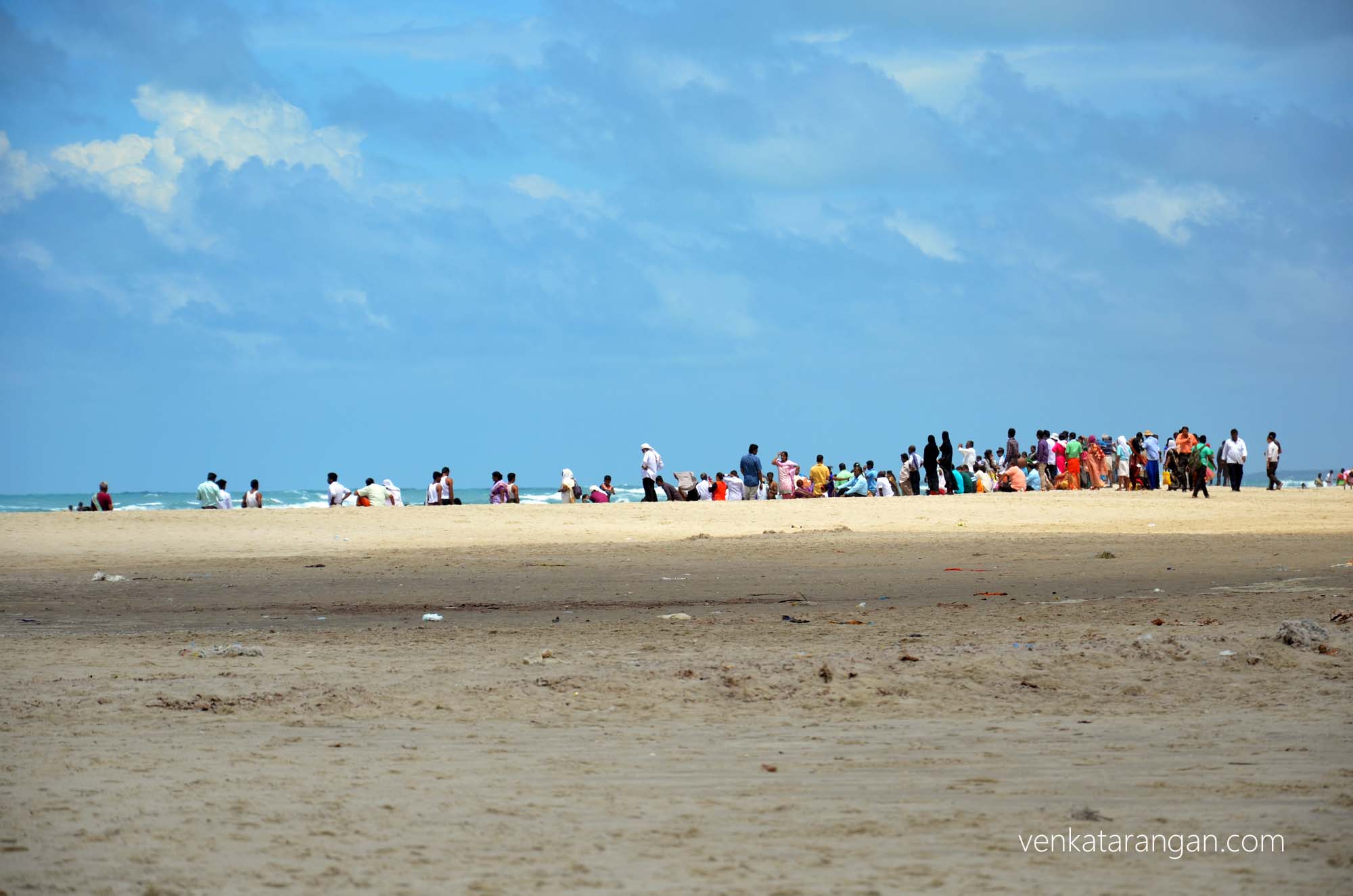
Hundreds of tourists visiting the pristine beaches in Dhanushkodi
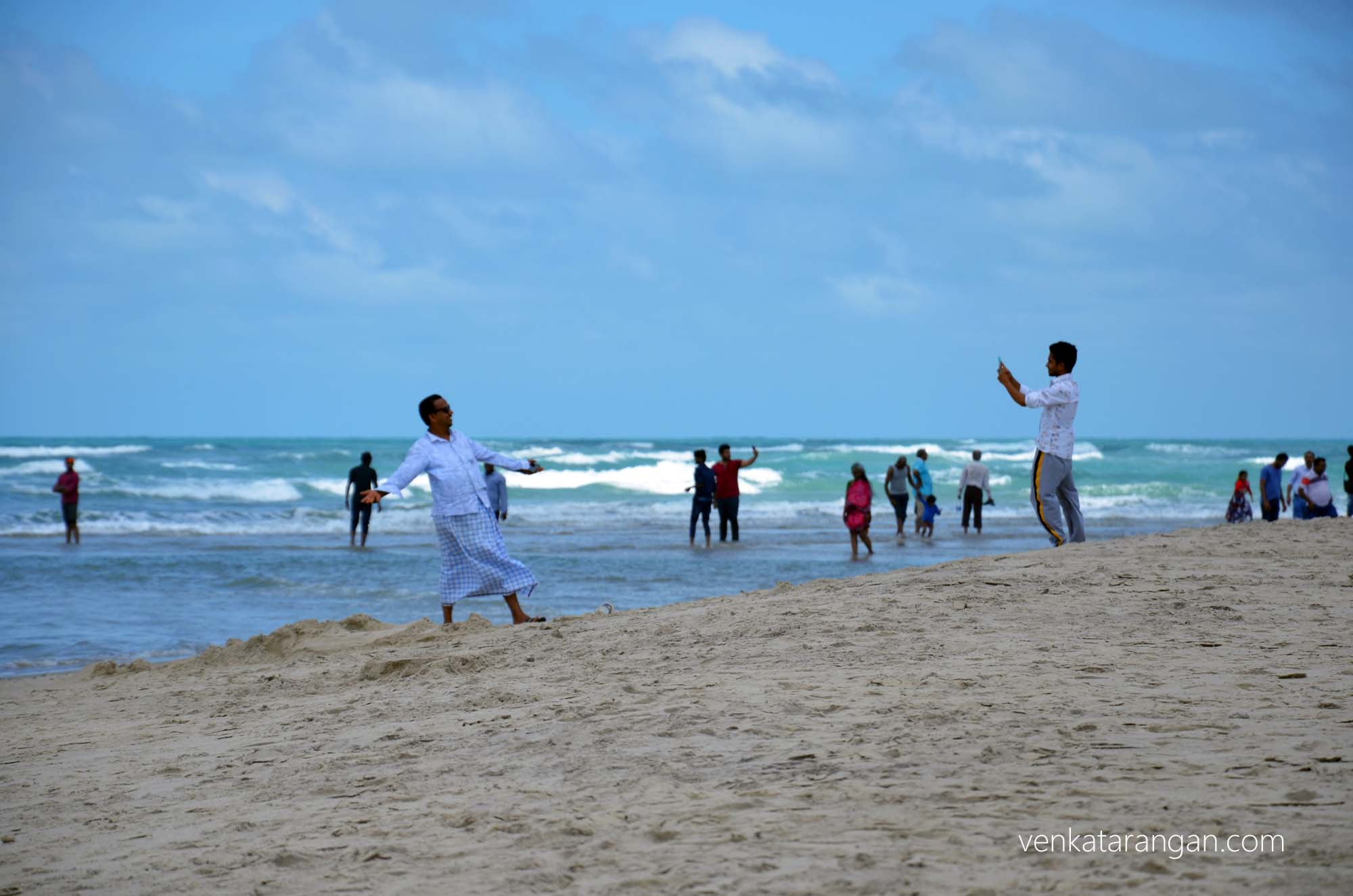
A man enthusiastically posing for his picture
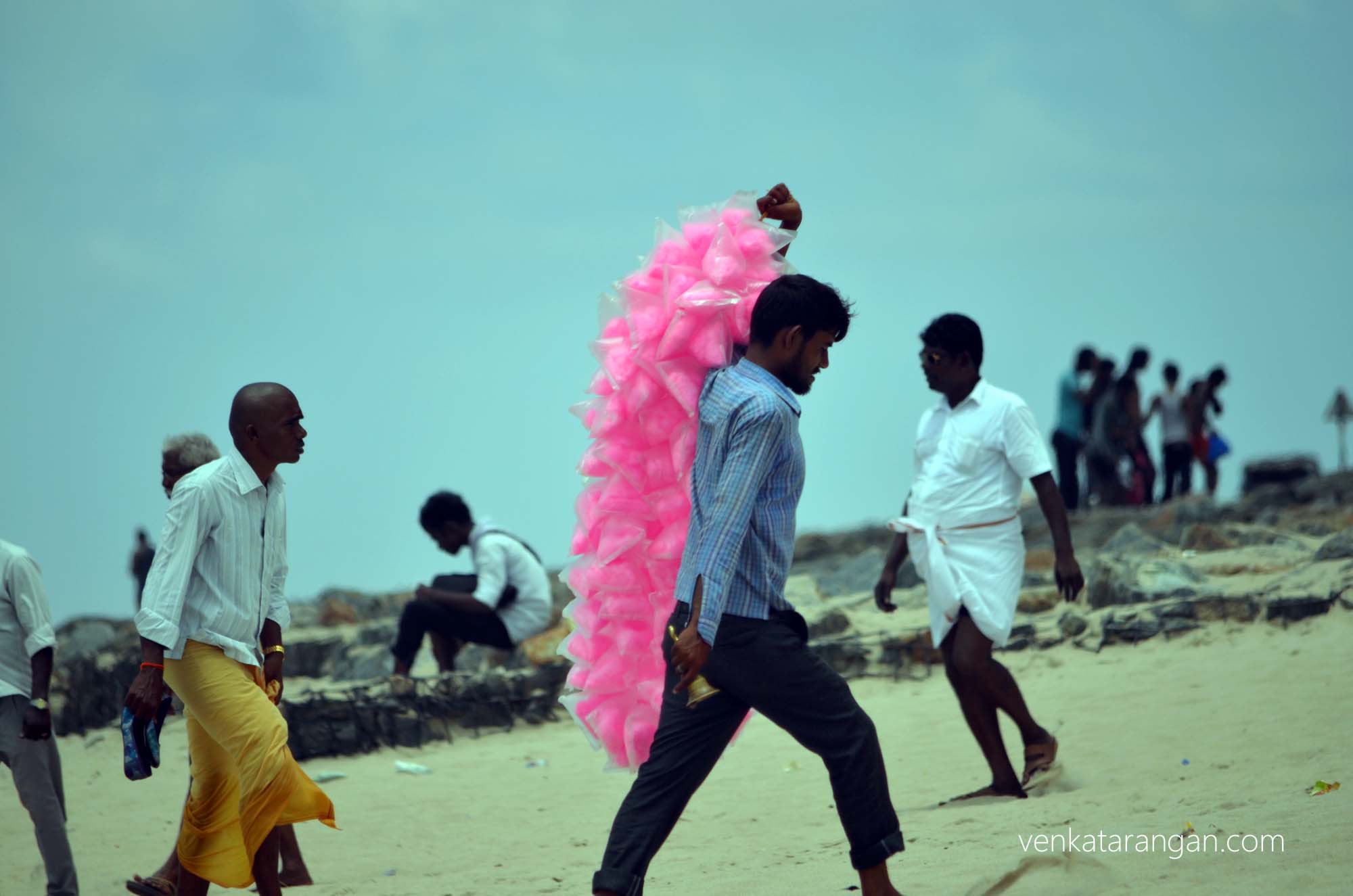
Pink sugar candy seller with a bell to sound his arrival
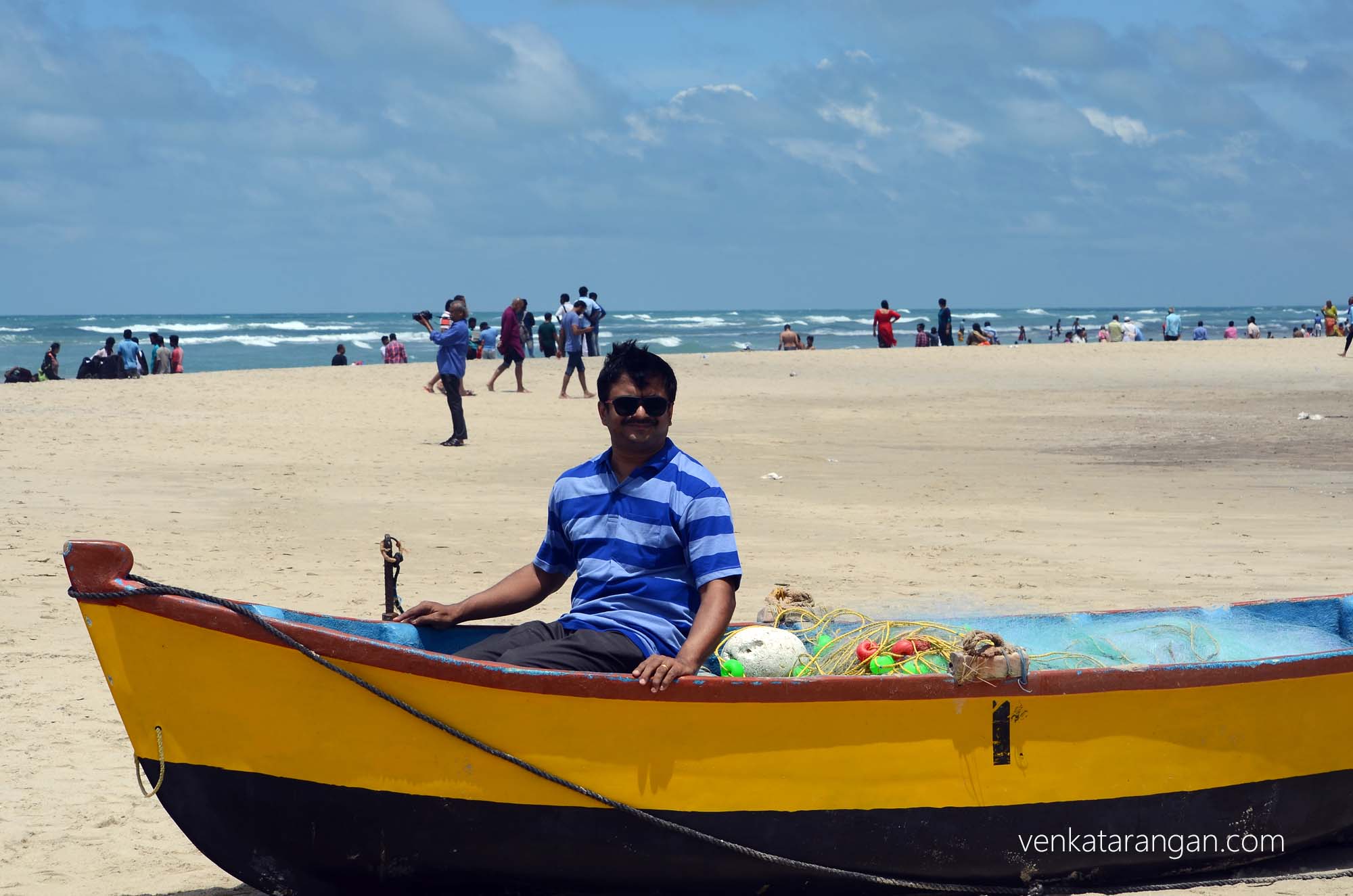
Venkatarangan on a boat to nowhere
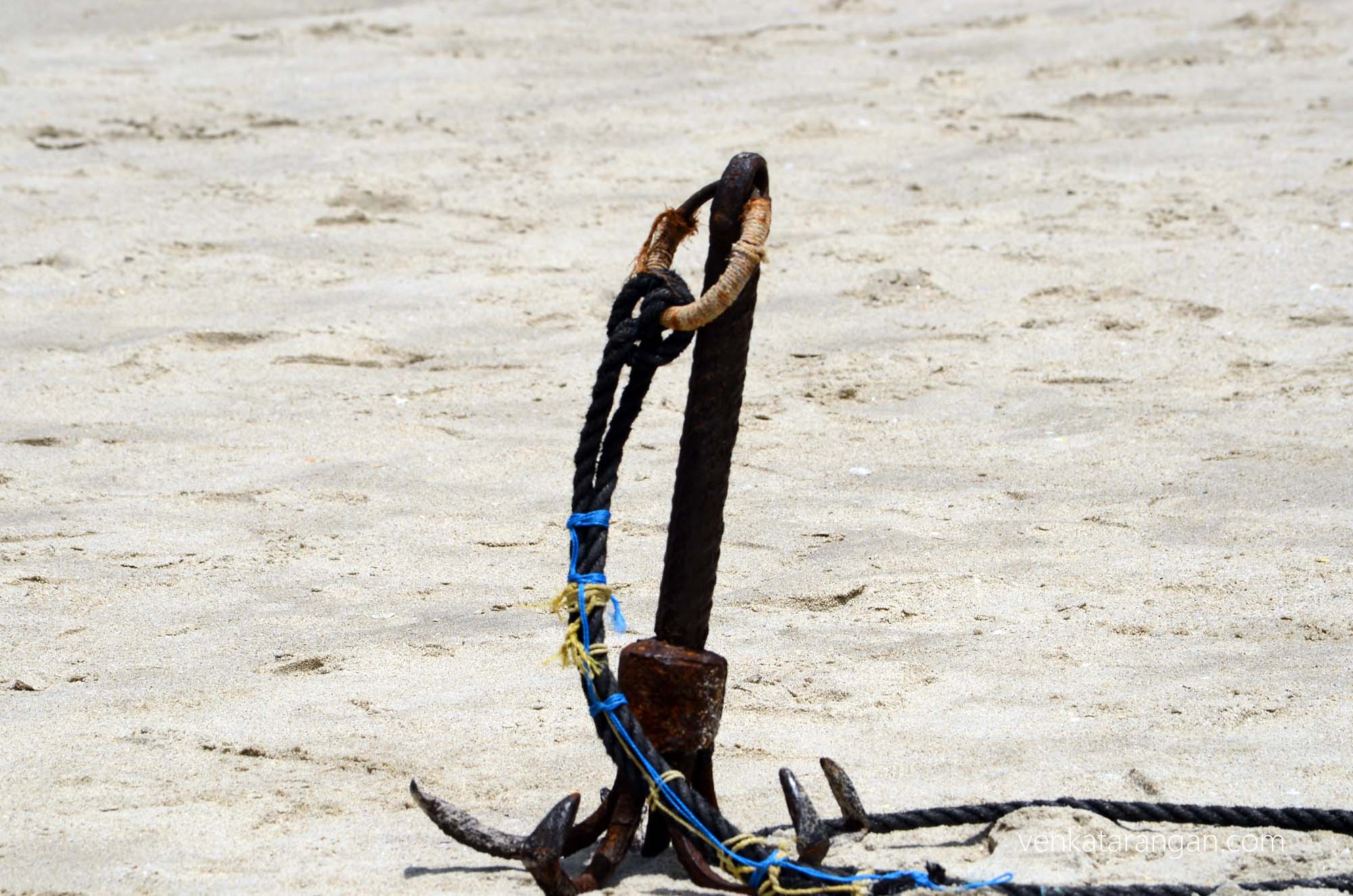
Anchor, rusted?
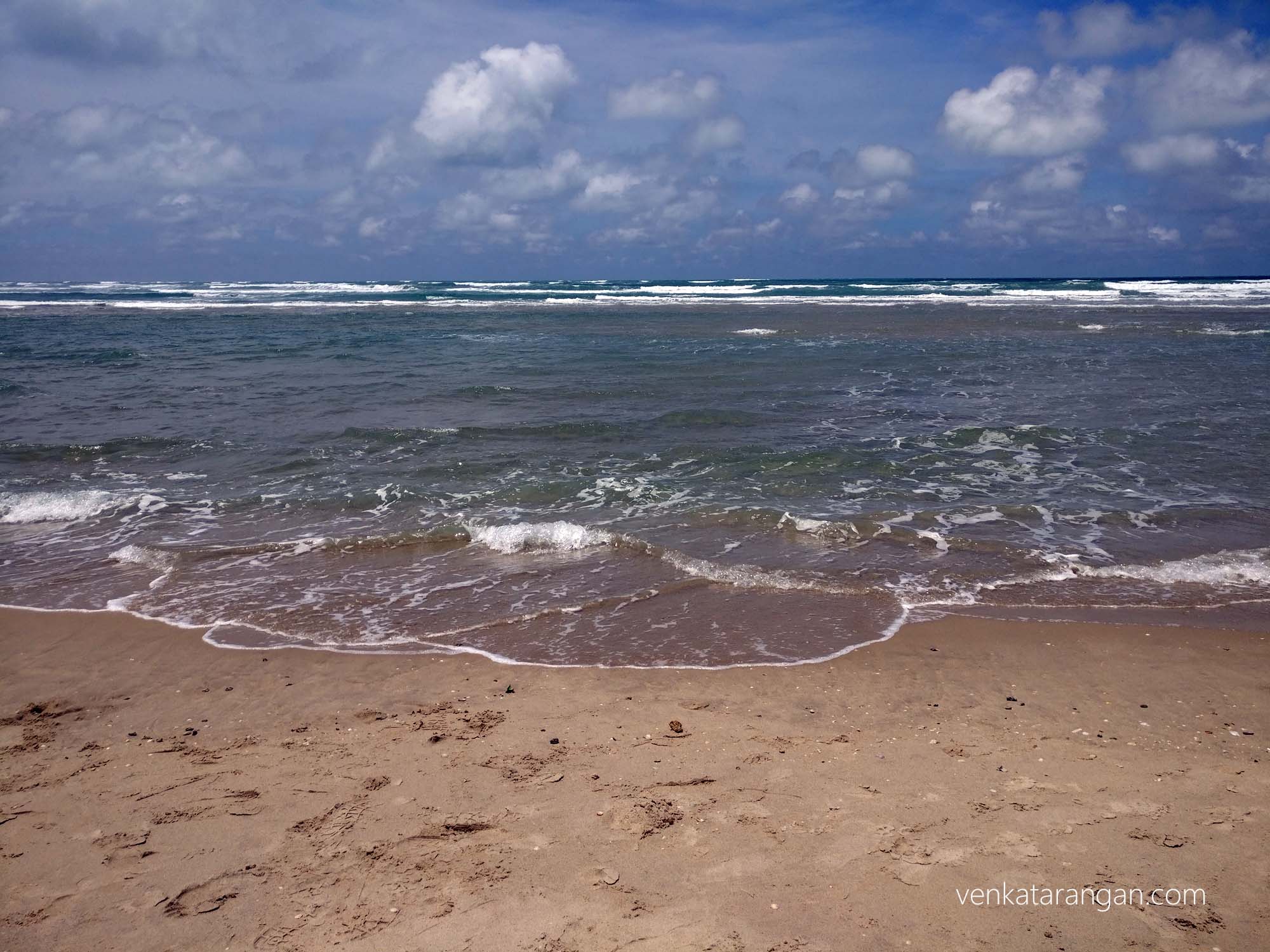
Pristine waves on the shore of Dhanushkodi
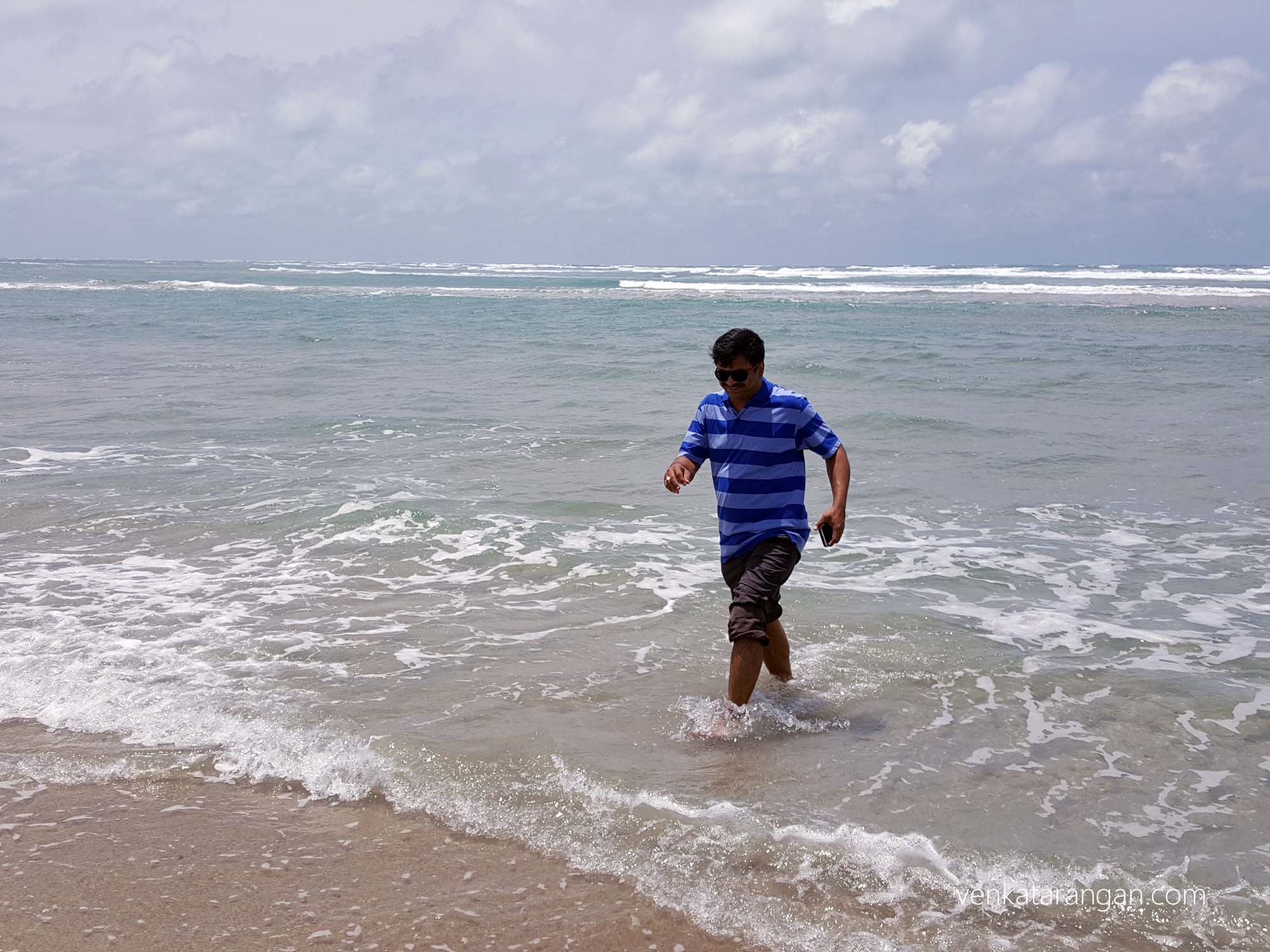
Ravi captured this spontaneous smile
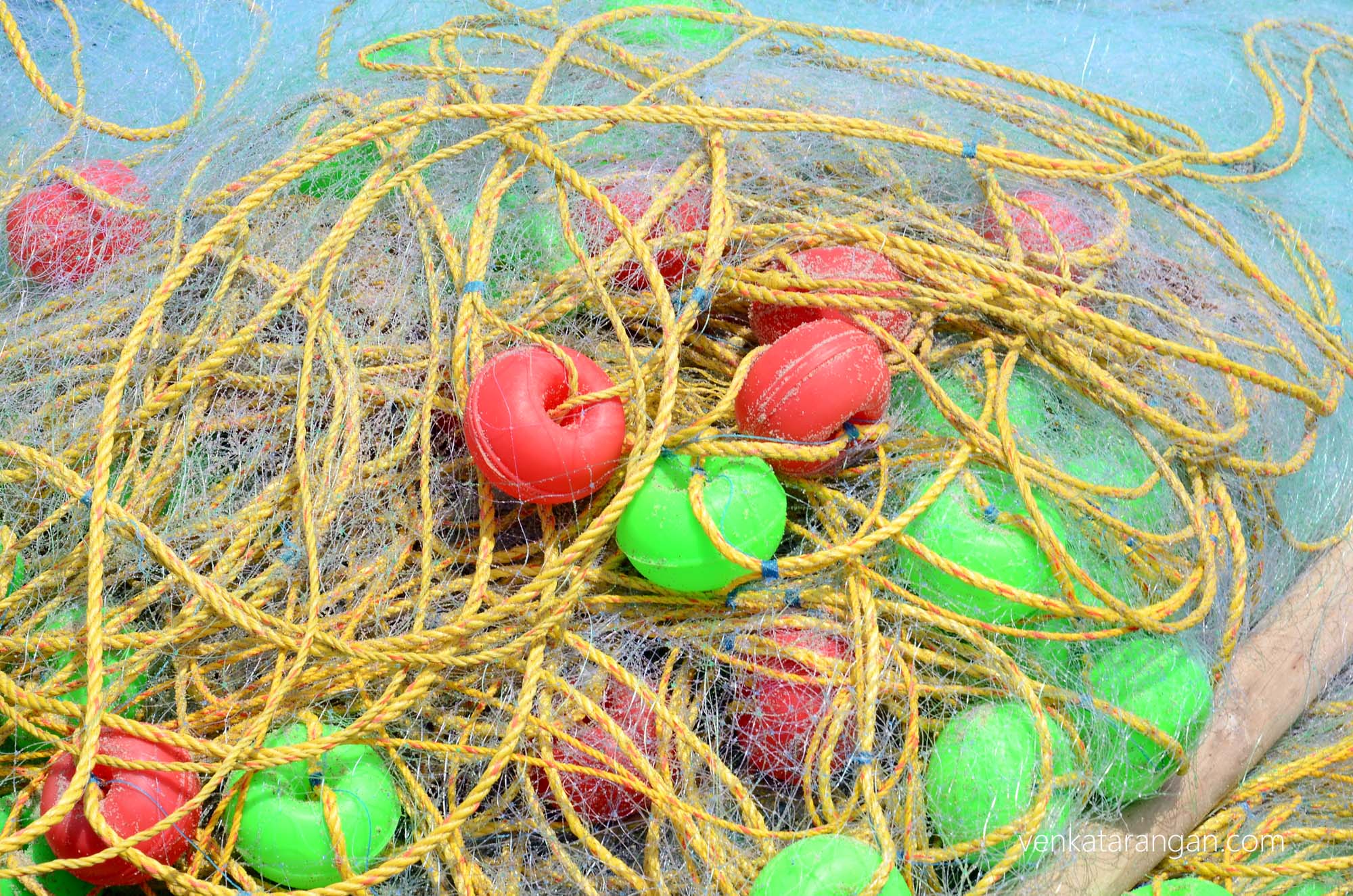
Colourful fishing net
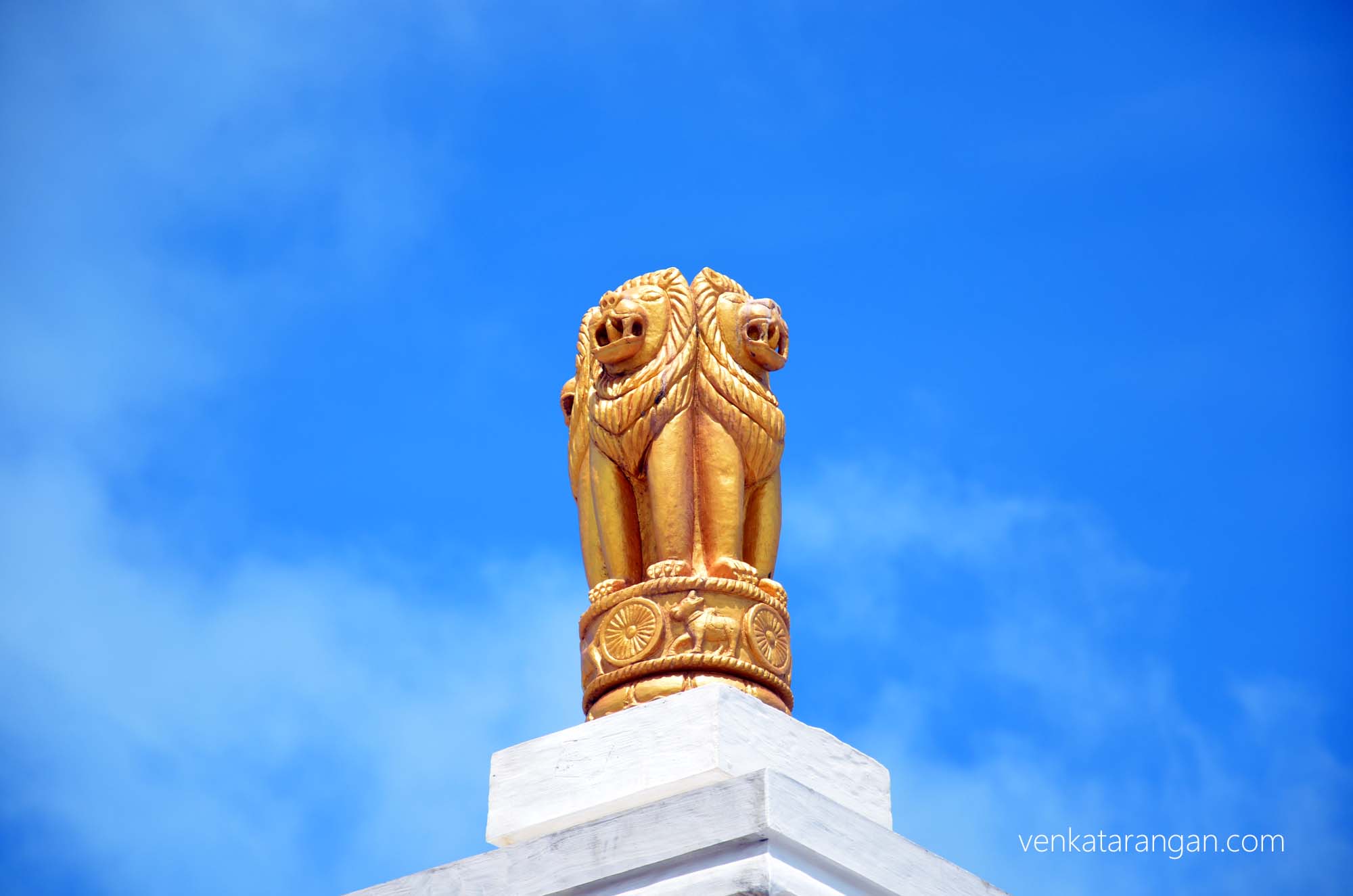
The National emblem of India featuring four Asiatic lions standing back to back. At the bottom is a horse and a bull, and at its centre is a wheel (Dharma Chakra).
Kothandaramar Temple
After Dhanushkodi, we went for a quick darshan at Kothandaramar Temple (கோதண்டராமர் திருக்கோயில்) which is on the way from Rameswaram to Dhanushkodi.
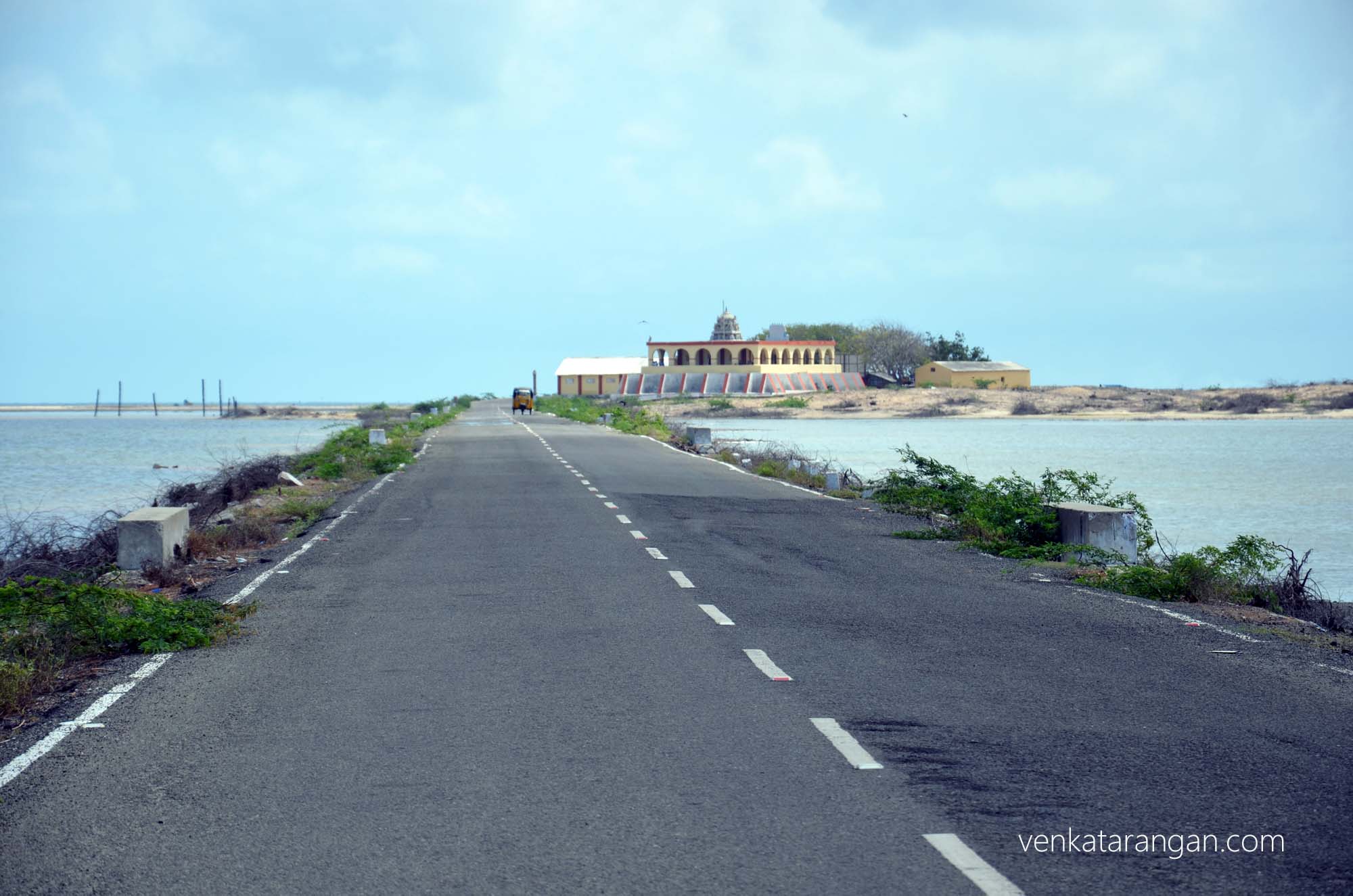
Kothandaramar Temple (கோதண்டராமர் திருக்கோயில்)

This holy place is where Lord Rama conducted crowning (Pattabhisekam) of Vibheeshunar, brother of King Ravana after the battle
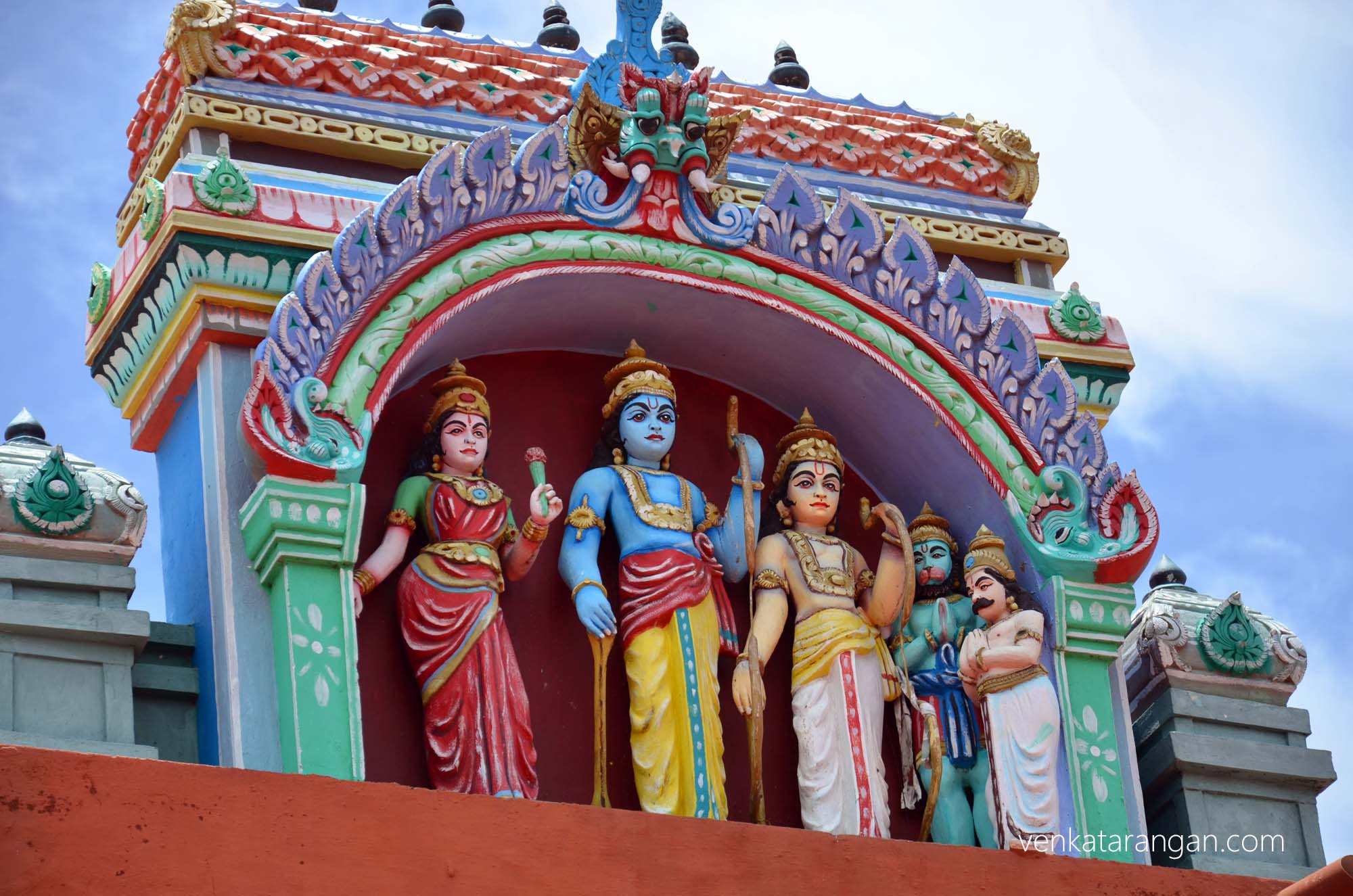
The temple tower depicting Goddess Seetha, God Rama and his brother Lakshmana along with Hanuman and Vibhheeshunar
Vivekananda Memorial Hall
After lunch, we went to Vivekananda Memorial Hall, which marks the place where Swami Vivekananda landed on his return from his historic visit to America. It is situated about 5 kilometres from the main road, peaceful, ideal for meditating and free of the tourist crowd. You get brilliant view of Pamban road bridge from here.
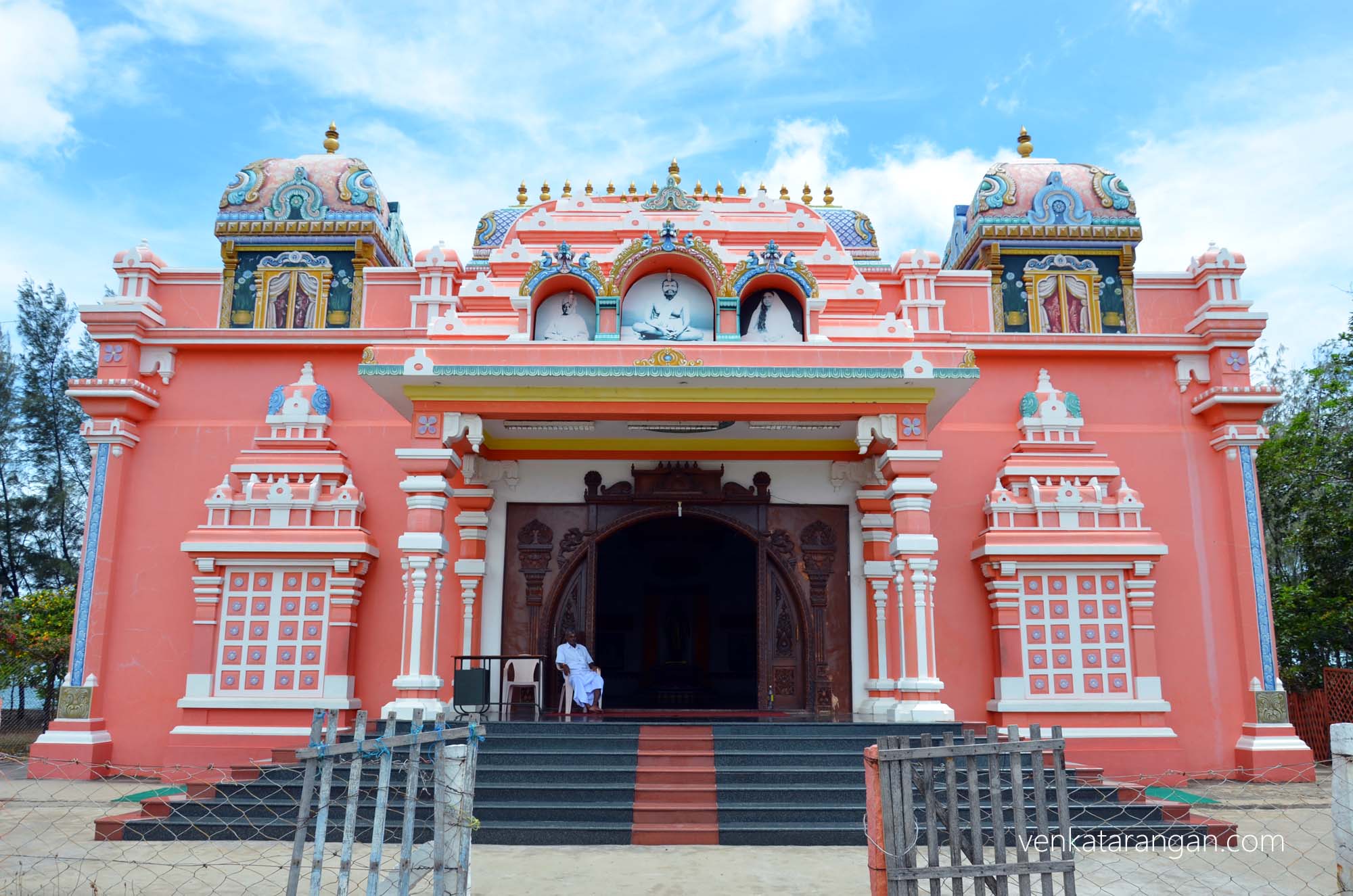
Vivekananda Memorial Hall, Rameswaram
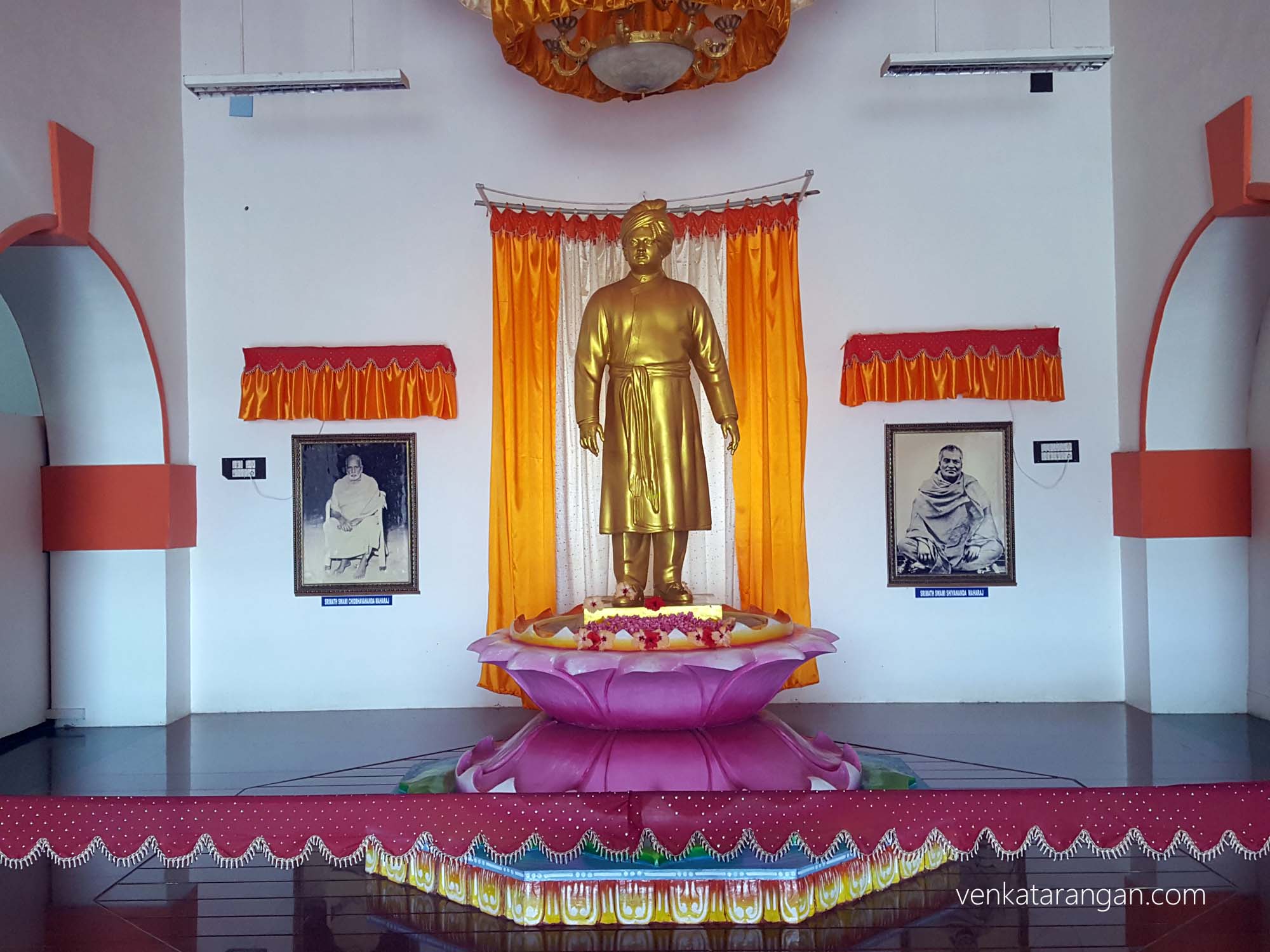
Swami Vivekananda (சுவாமி விவேகானந்தர்) 1863-1902
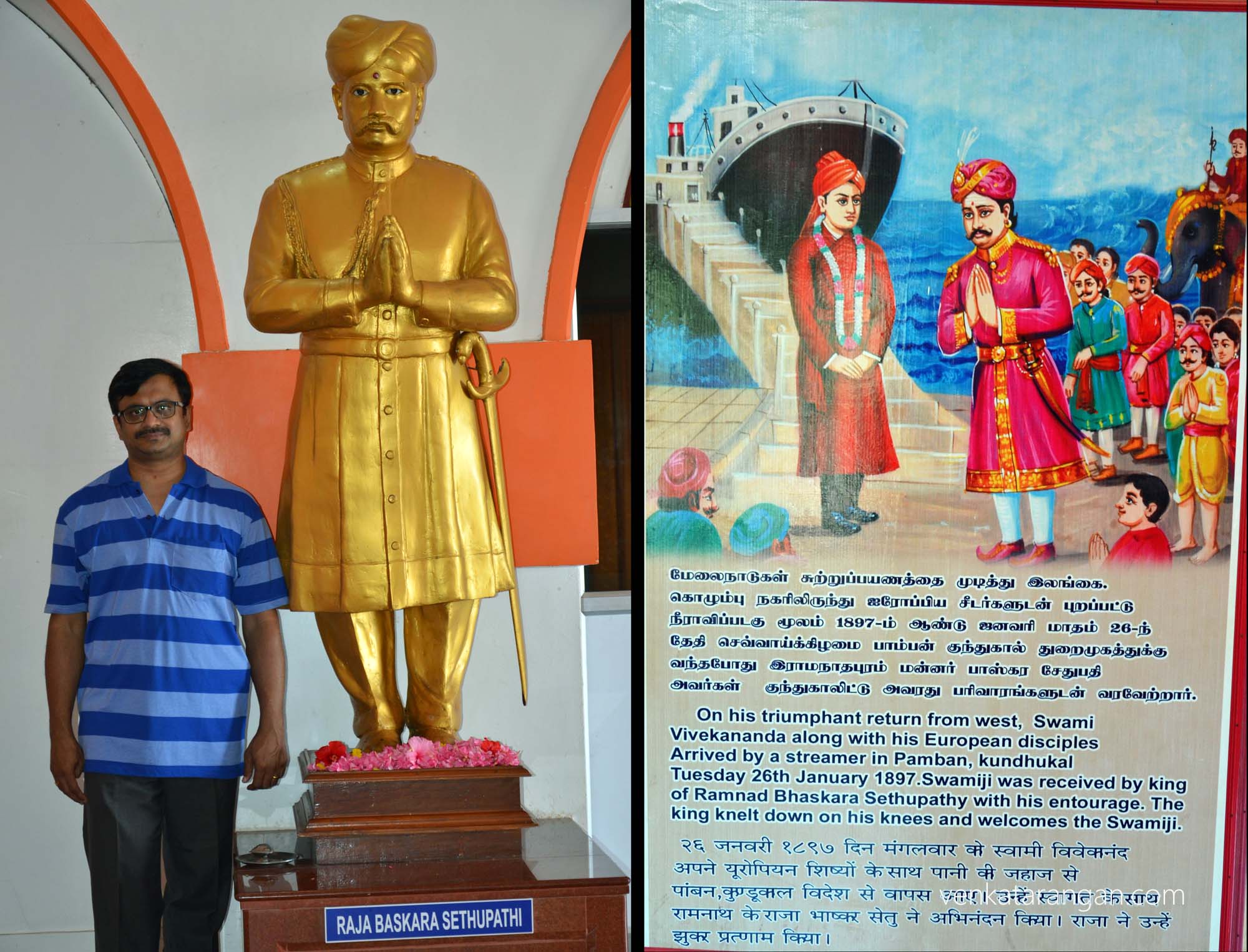
On his return from west, Swami Vivekananda was received by King of Ramnad Bhaskara Sethupathy – 26 January 1897
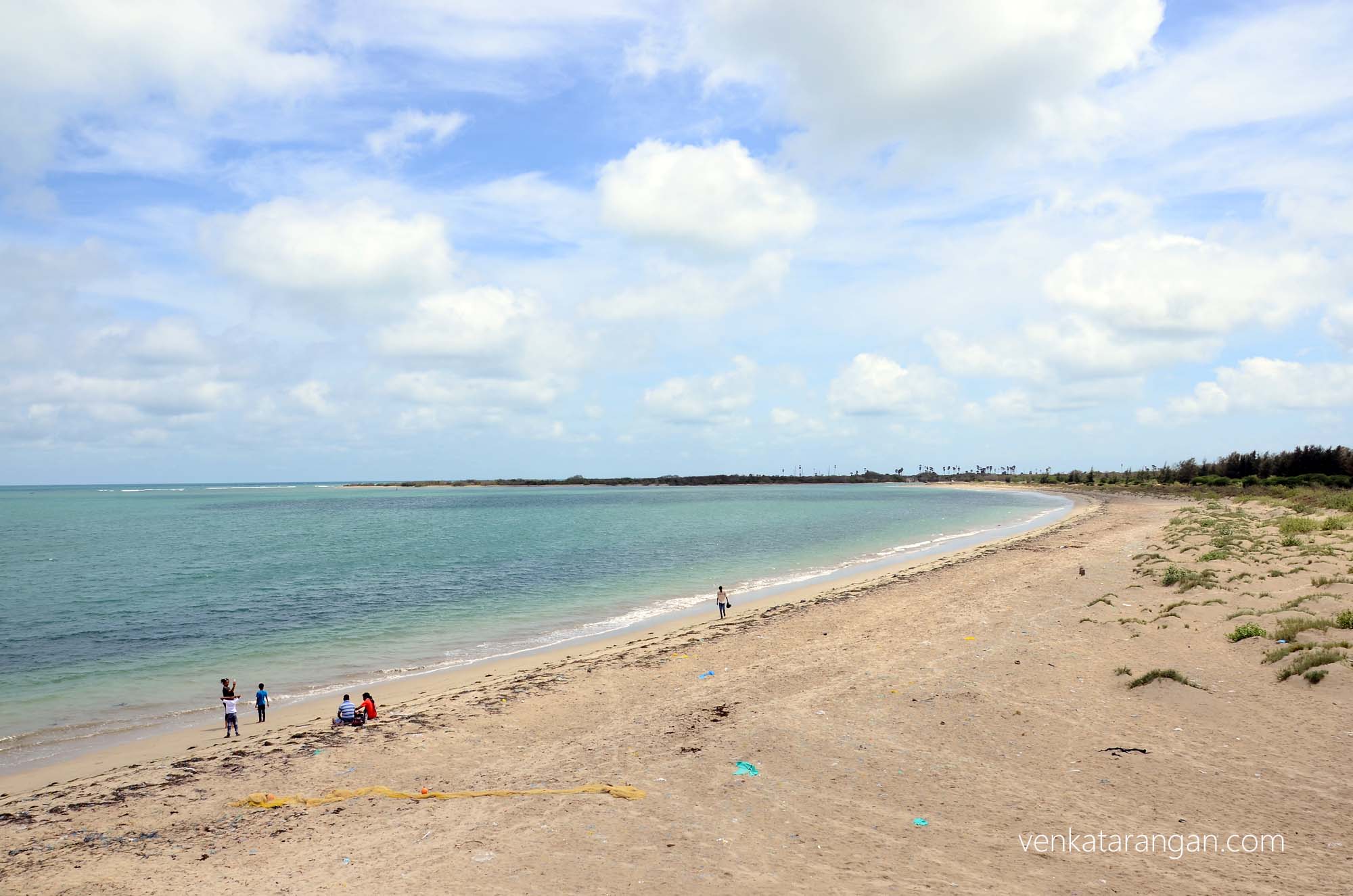
Beach behind the Vivekananda Hall
Pamban bridge
Our last stop for the visit was to the new Pamban road bridge (Annai Indira Gandhi road bridge) which connects the National Highway (NH 49) with the Rameswaram island.
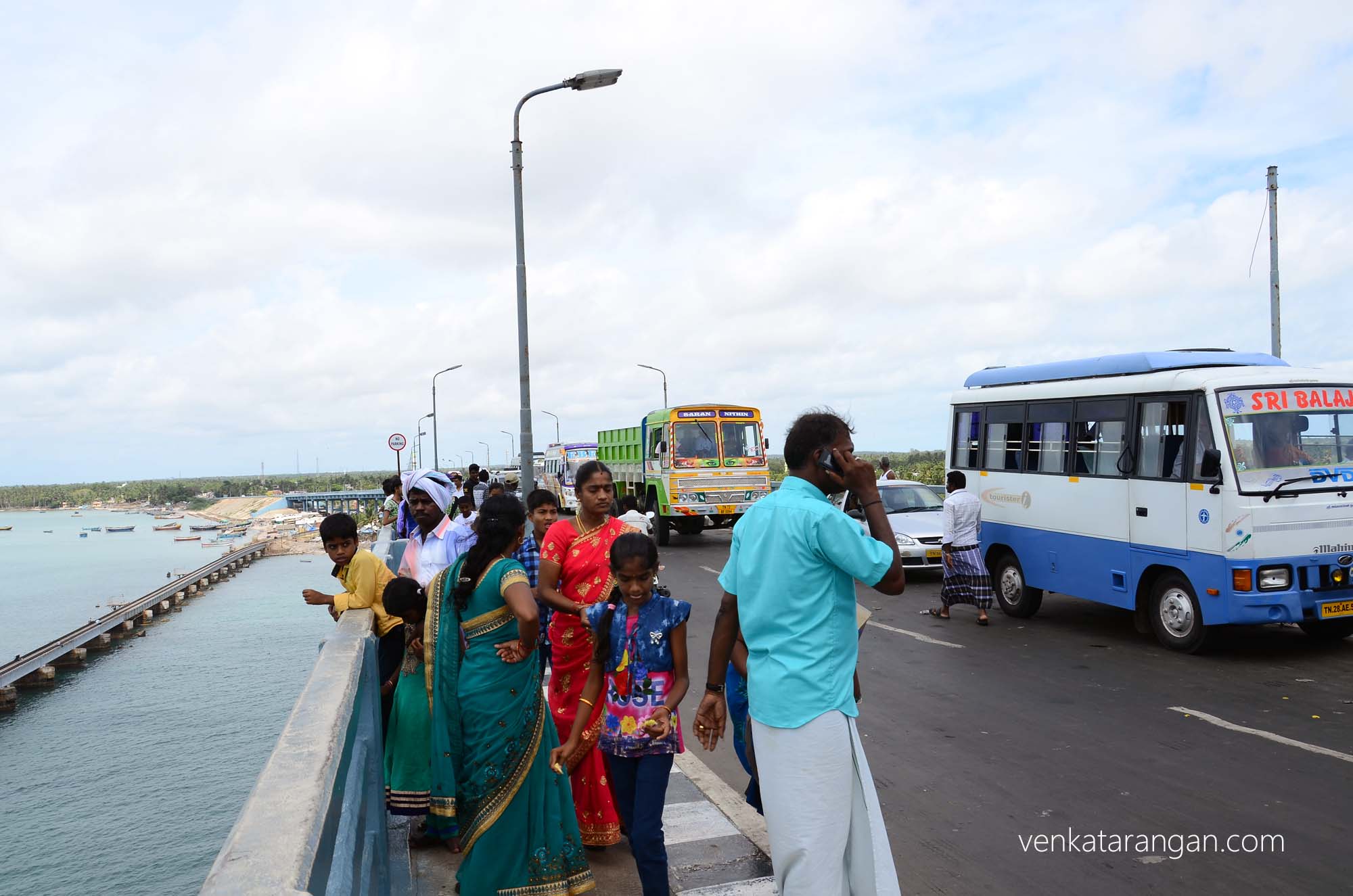
Though prohibited, tourist vehicles stop on top of the road bridge for a good view
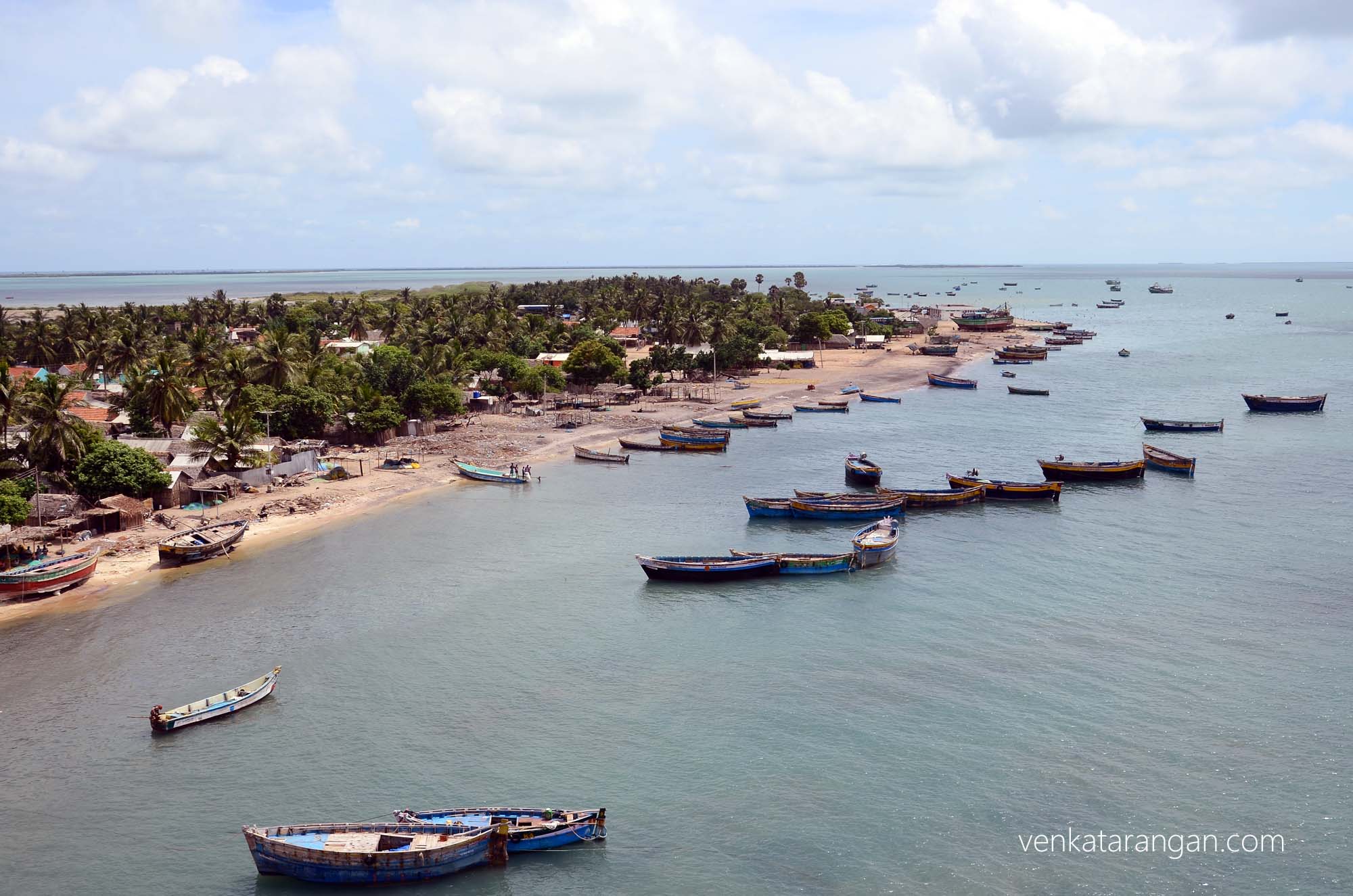
Fishing hamlets as seen from Pamban road bridge
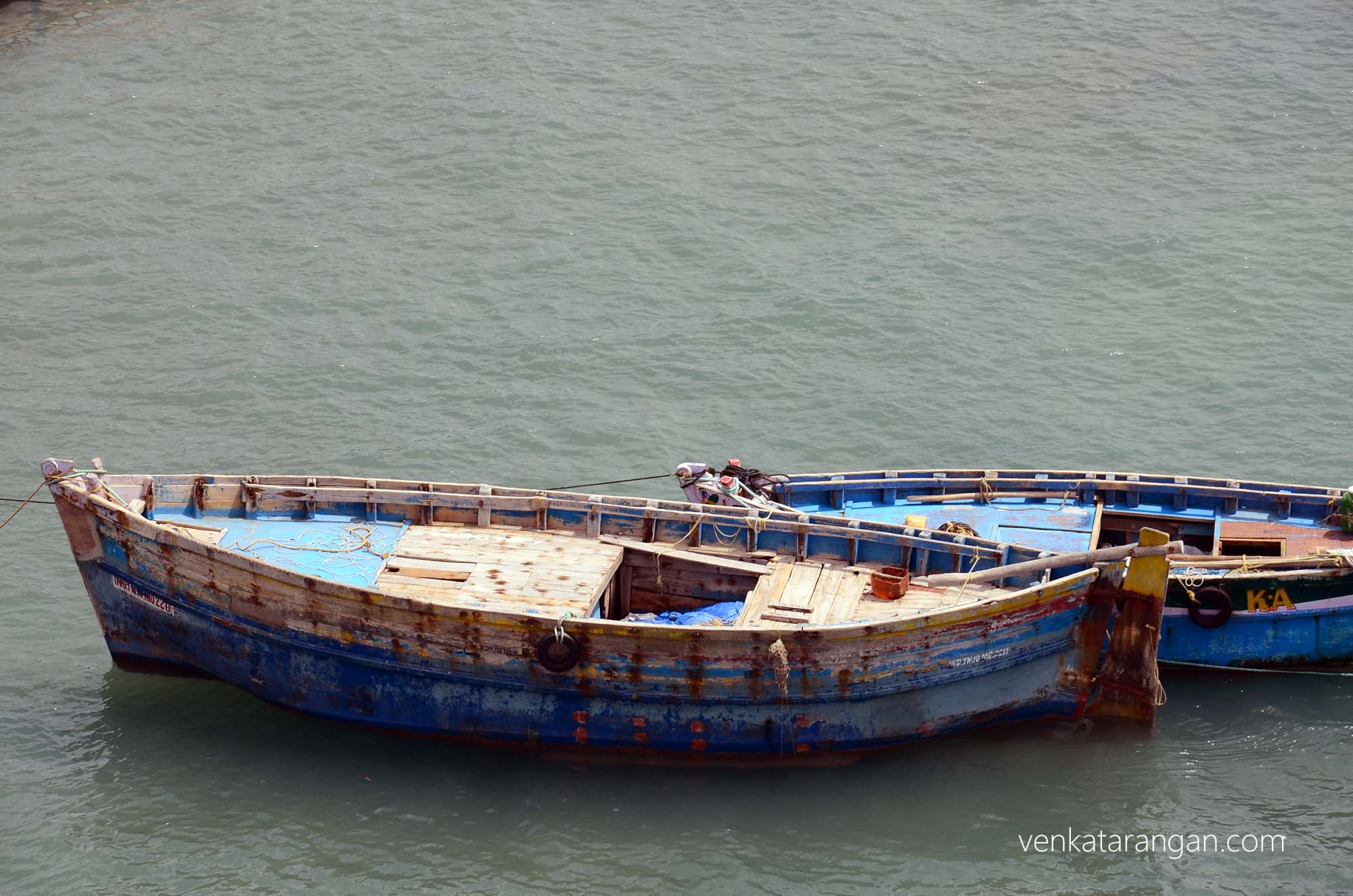
Fishing boats
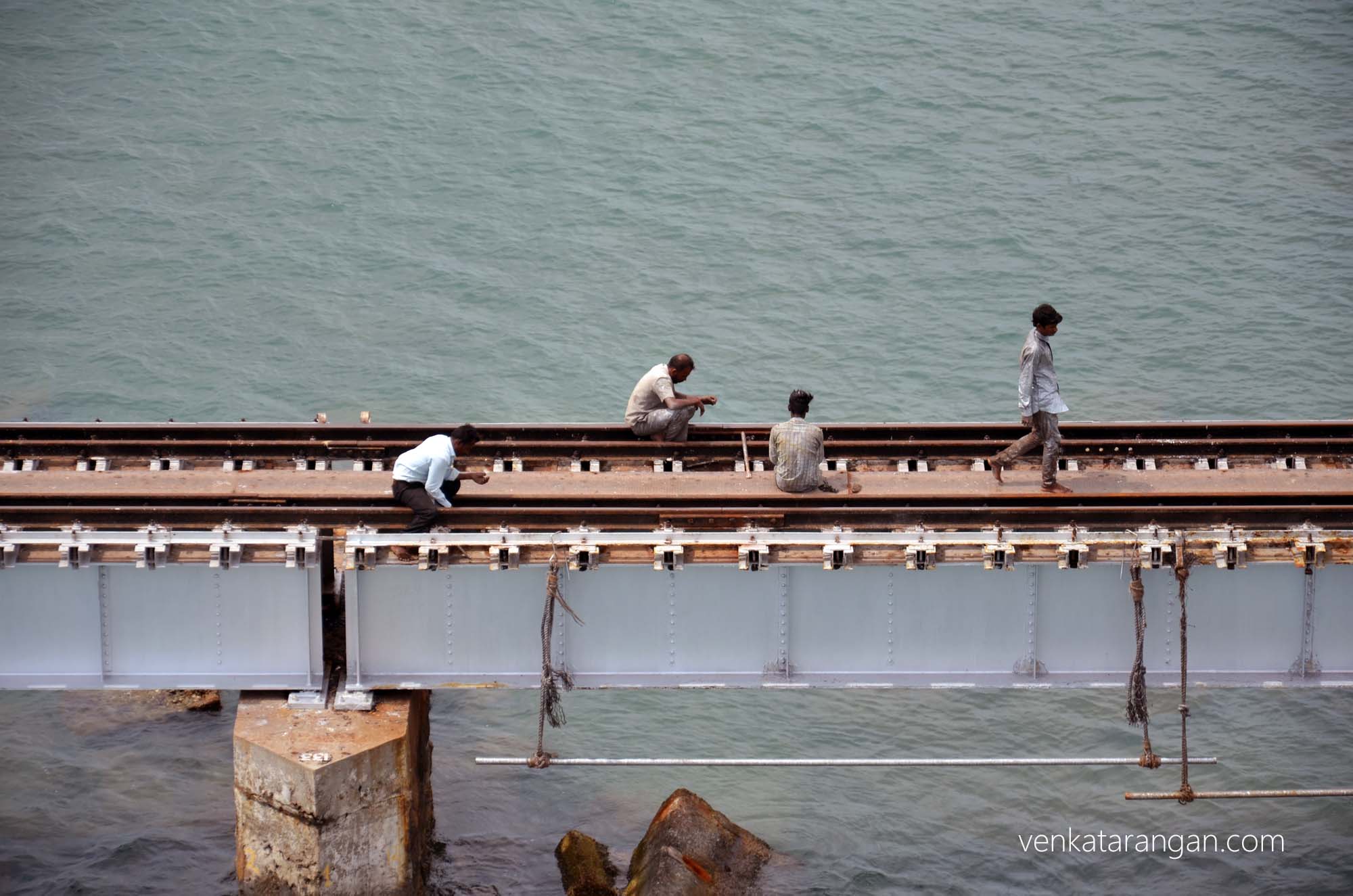
The Railway men repairing the track – Pambam rail bridge

Iconic Pambam rail bridge
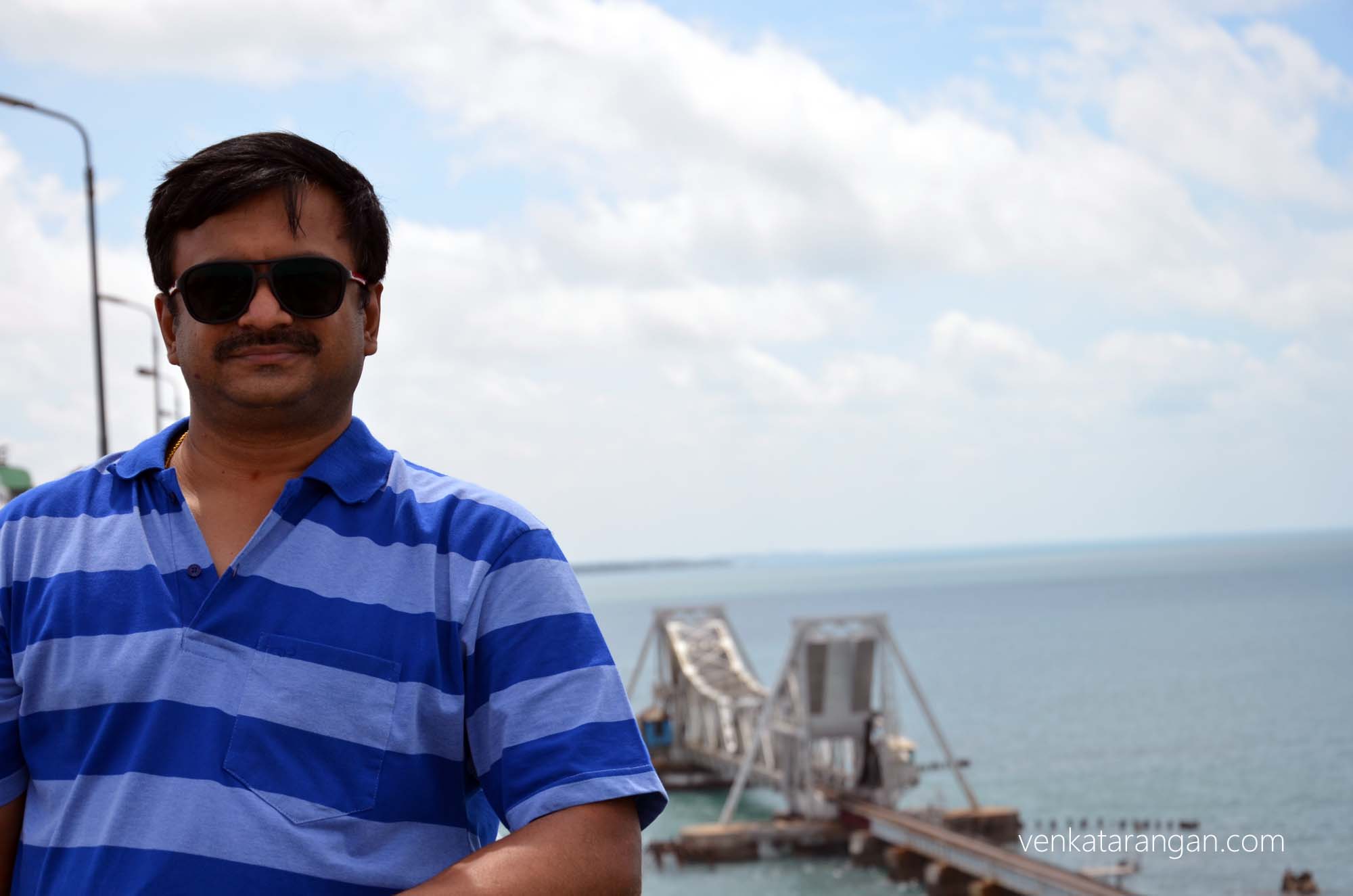
Venkatarangan in front of the Iconic Pamban rail bridge
Overall, the long-awaited trip to Rameswaram was fun and spiritual too.
Read here the post on my visit to House of Kalam and Dr Kalam’s memorial.


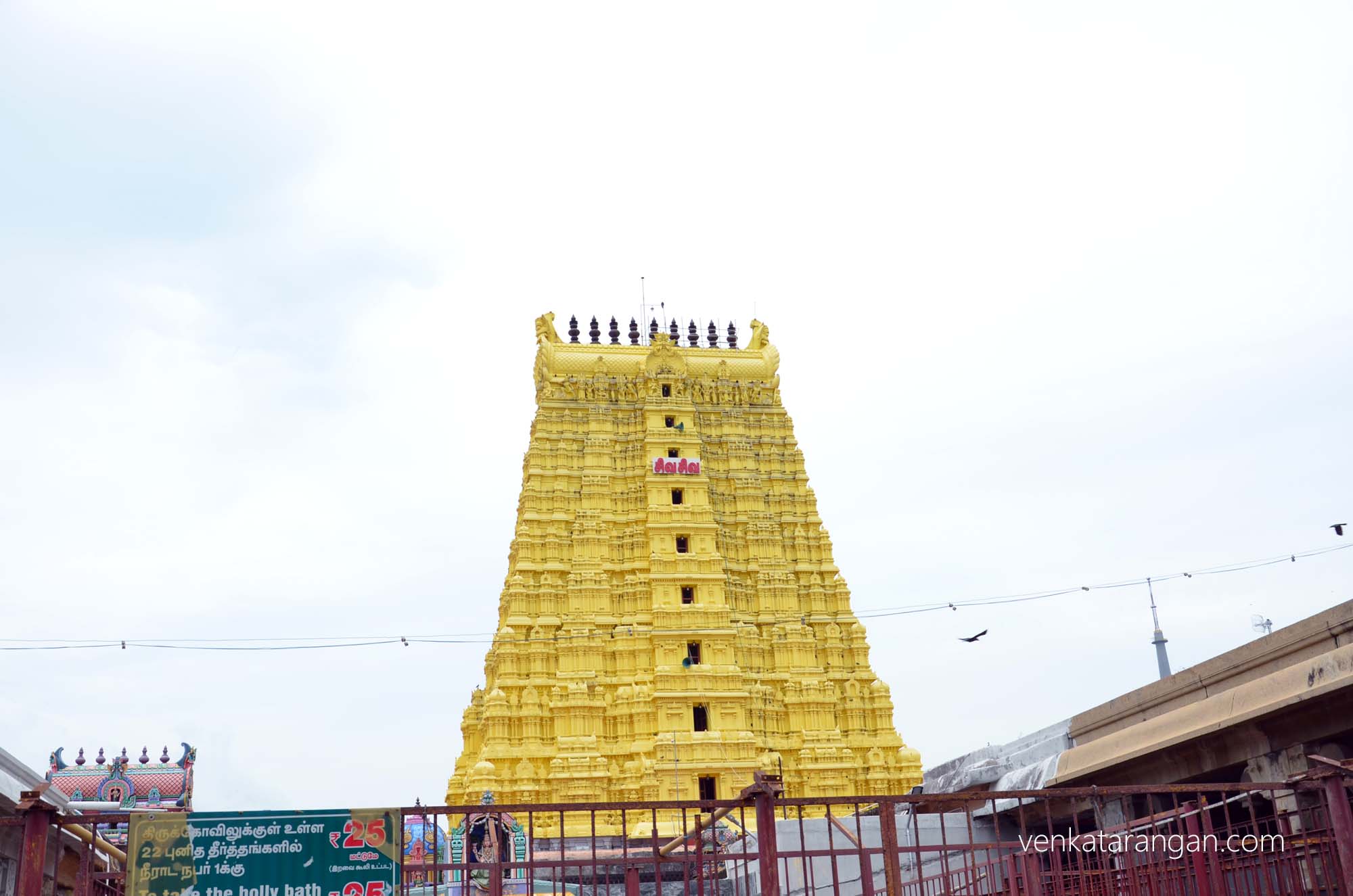
Comments